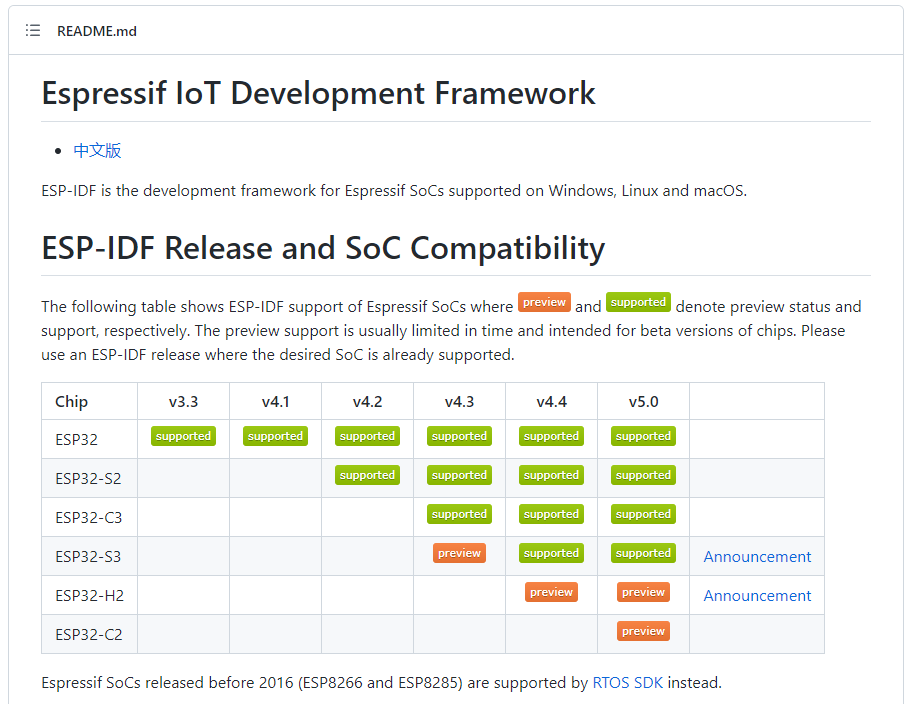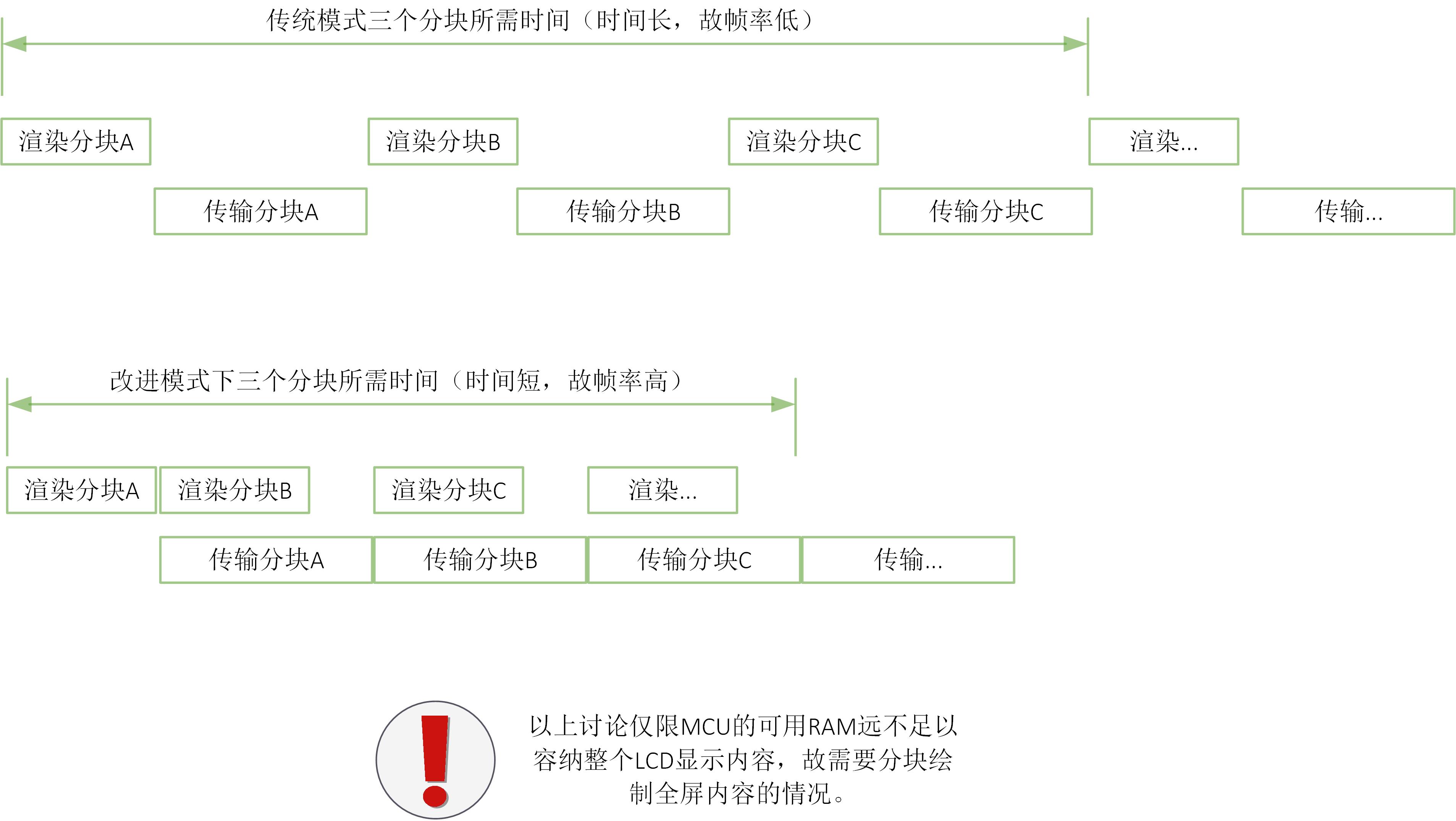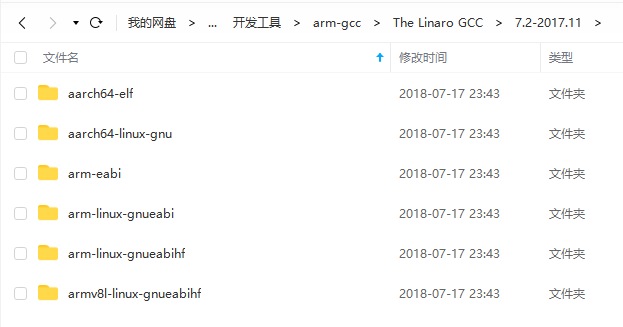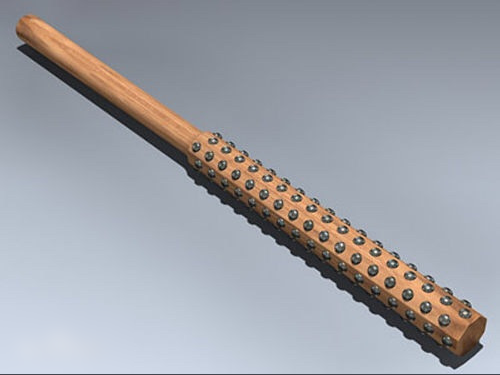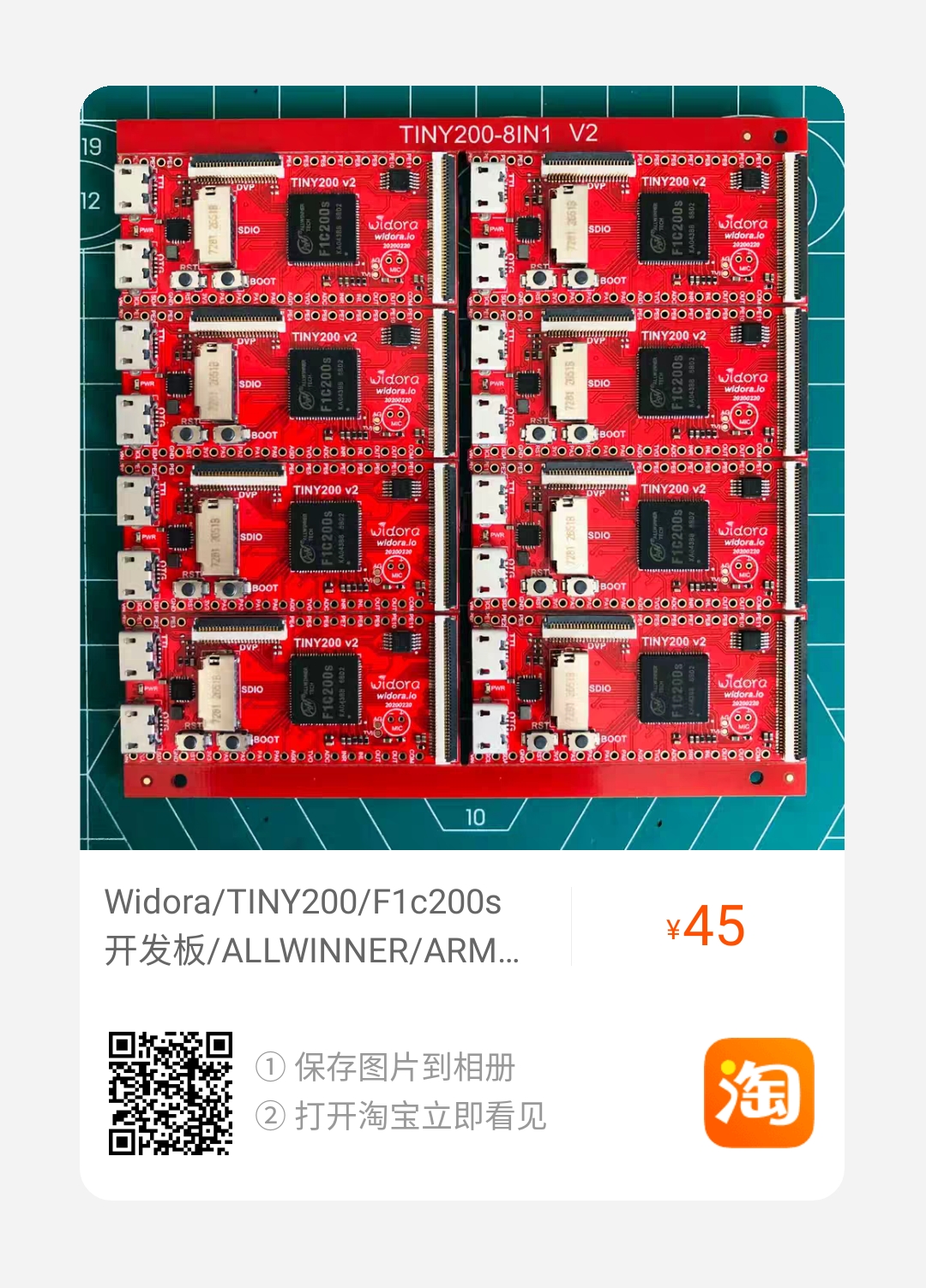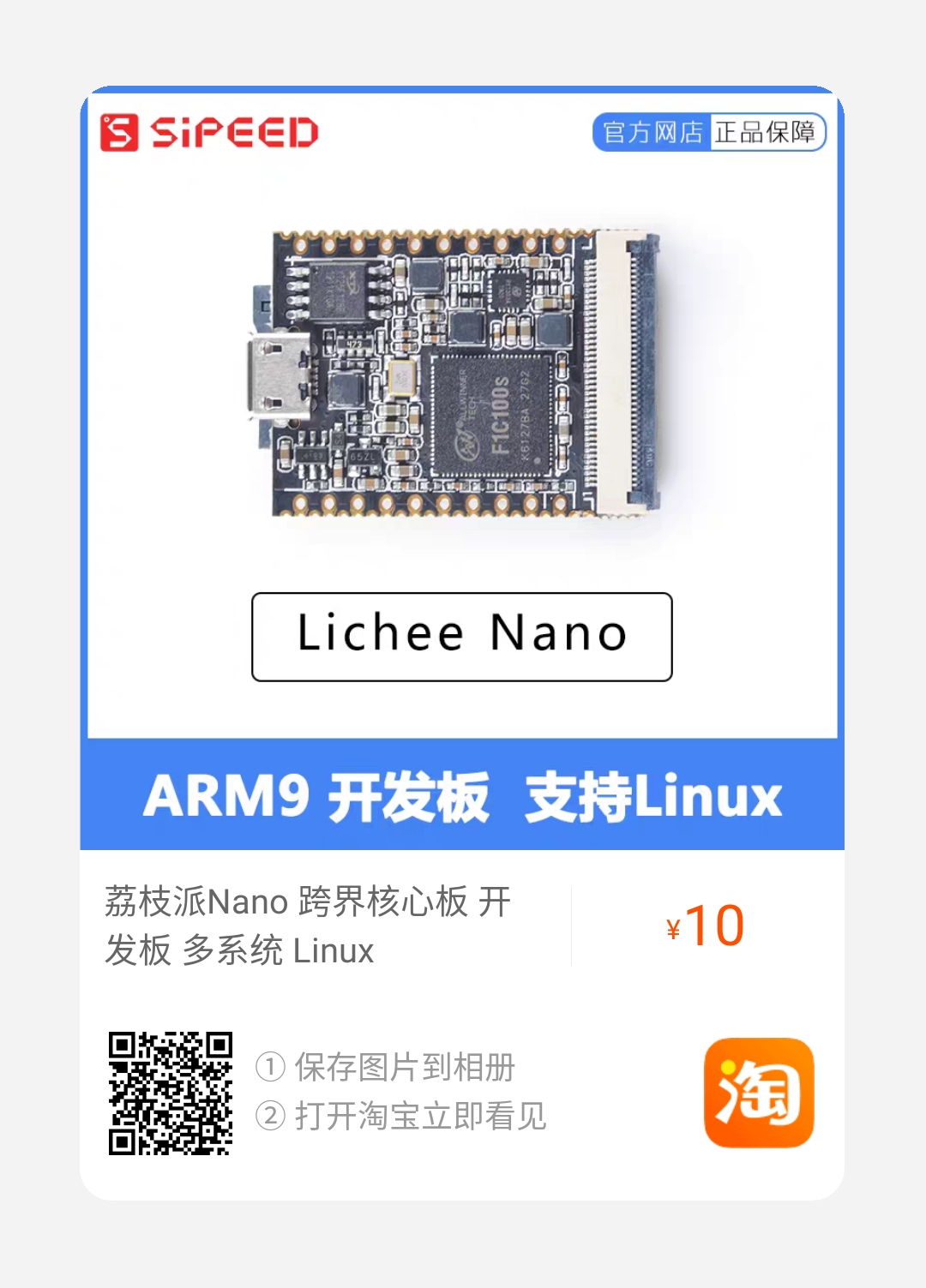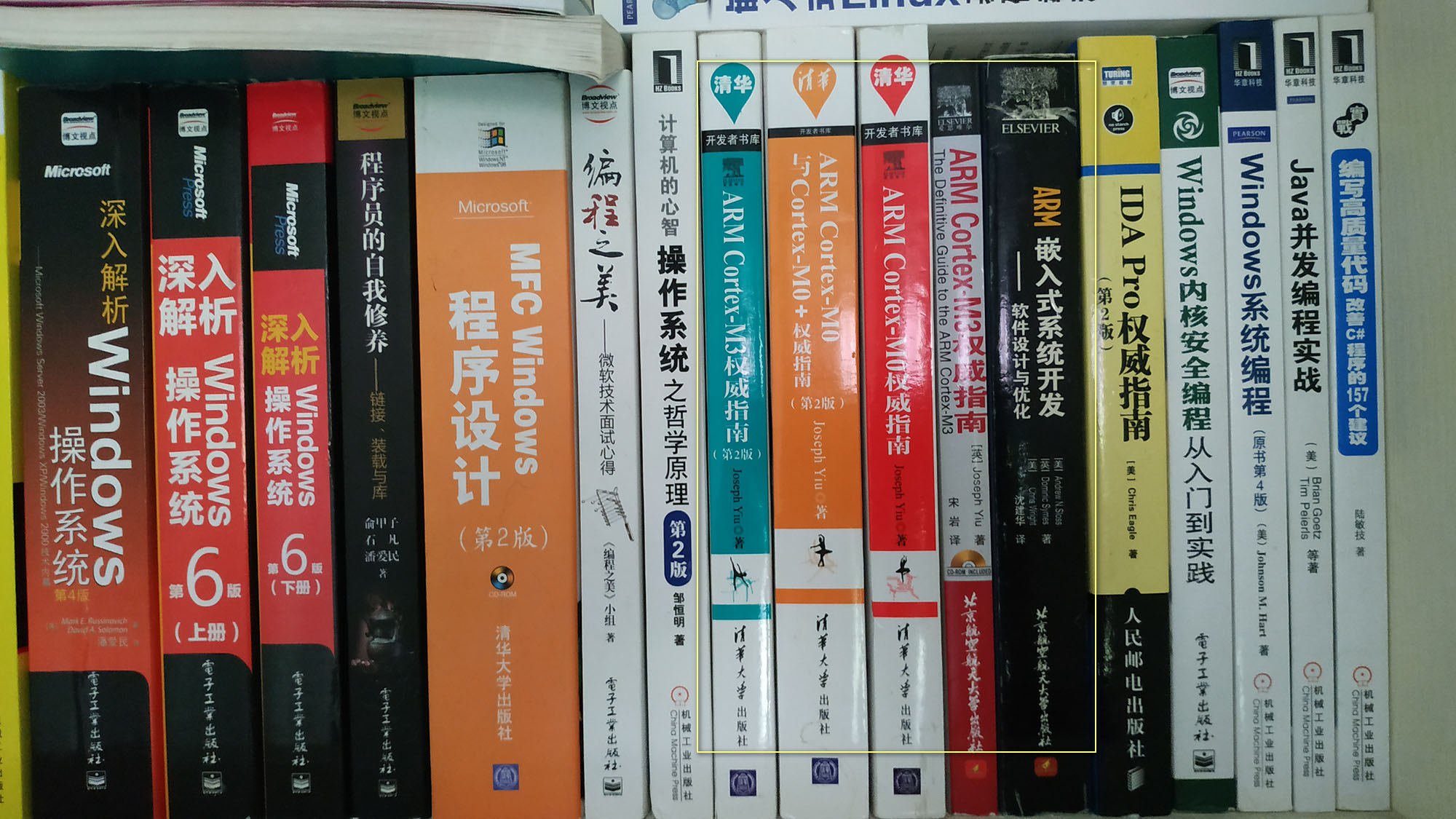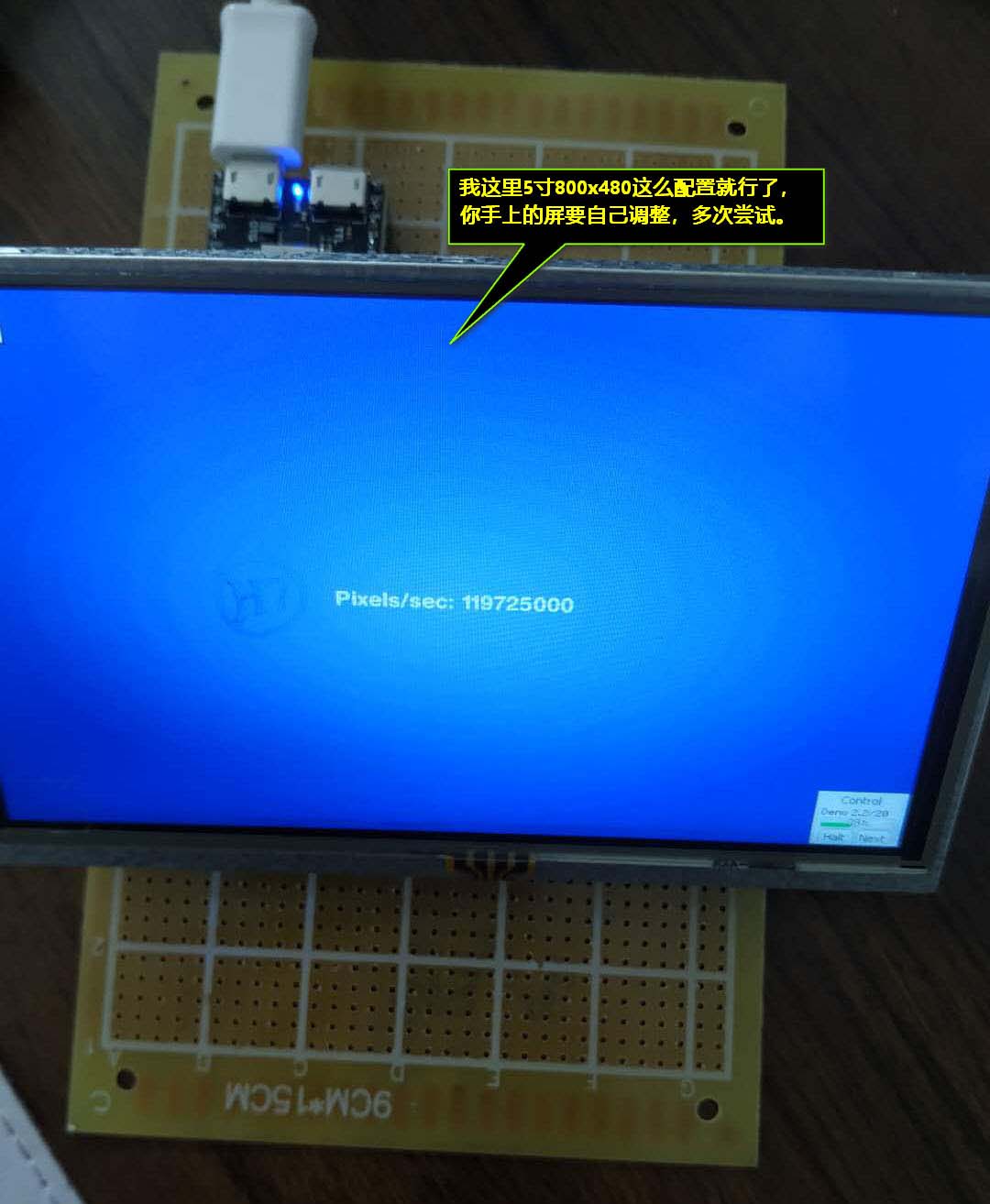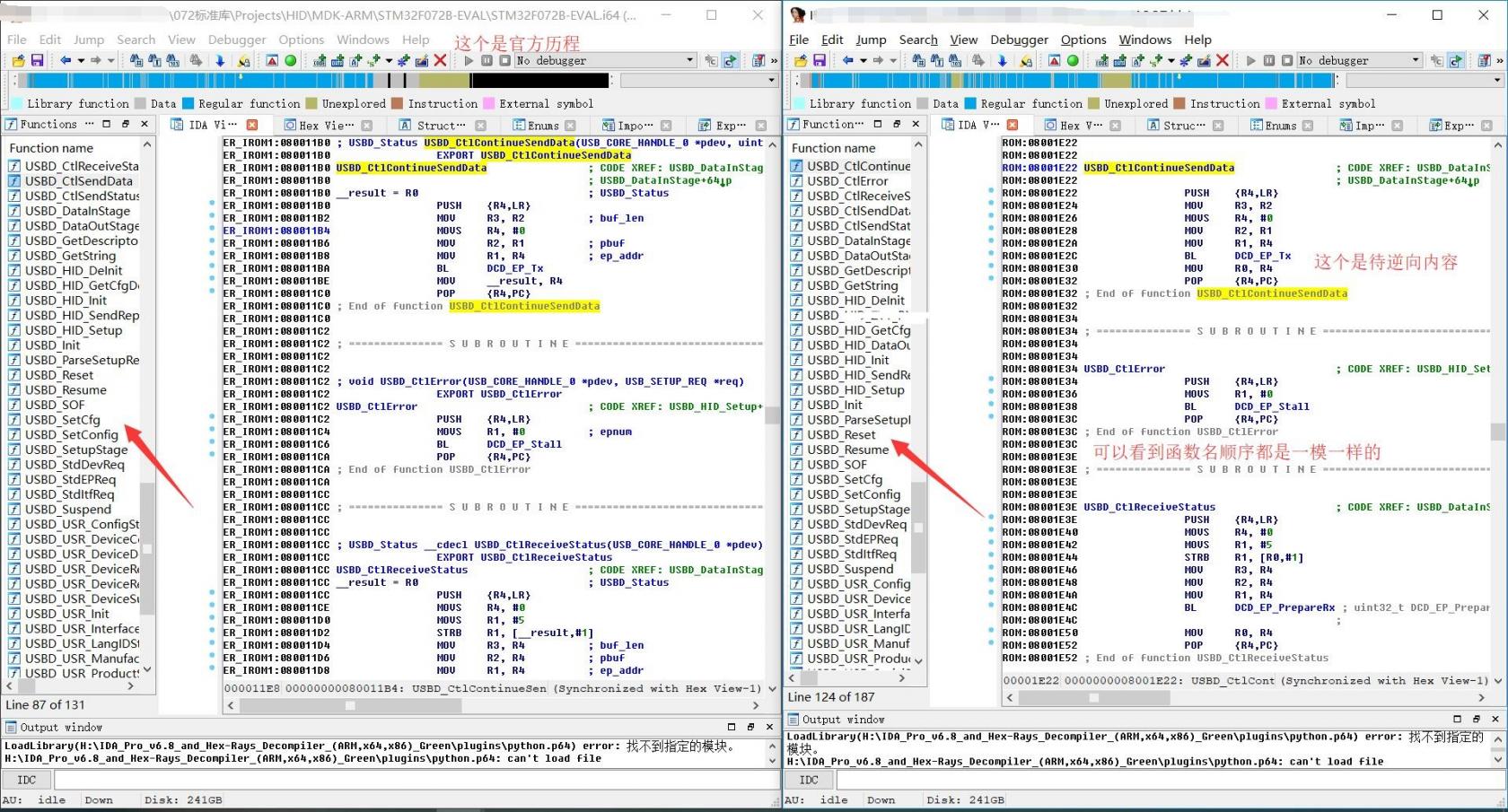- 首页
- » 搜索
- » armstrong 发表的帖子
页次: 1
#2 Re: 全志 SOC » 跟贴从零构建f1c200s硬件开发板 » 2025-03-07 13:05:22
#3 Re: 全志 SOC » f1c200s,经常会死机 » 2025-03-07 12:59:10
#4 Re: 工业芯 匠芯创 » 一维码+二维码识别方案 » 2024-12-11 22:04:57
#6 Re: 全志 SOC » libxnes开源了,这是一款纯C99标准拥有超强的可移植性,可读性,可玩性的高精度NES模拟器库,纯手写打造,感兴趣的可以在这帖子里恰饭。 » 2024-10-22 15:58:45
#7 Re: 计算机图形/GUI/RTOS/FileSystem/OpenGL/DirectX/SDL2 » FreeRTOS运行Lvgl,应该如何设计框架的? » 2024-10-15 11:52:39
#8 Re: 全志 SOC » libxnes开源了,这是一款纯C99标准拥有超强的可移植性,可读性,可玩性的高精度NES模拟器库,纯手写打造,感兴趣的可以在这帖子里恰饭。 » 2024-10-11 14:02:13
#9 Re: 全志 SOC » libxnes开源了,这是一款纯C99标准拥有超强的可移植性,可读性,可玩性的高精度NES模拟器库,纯手写打造,感兴趣的可以在这帖子里恰饭。 » 2024-10-11 13:55:34
#10 Re: 全志 SOC » libxnes开源了,这是一款纯C99标准拥有超强的可移植性,可读性,可玩性的高精度NES模拟器库,纯手写打造,感兴趣的可以在这帖子里恰饭。 » 2024-10-09 21:03:33
#11 Re: 全志 SOC » libxnes开源了,这是一款纯C99标准拥有超强的可移植性,可读性,可玩性的高精度NES模拟器库,纯手写打造,感兴趣的可以在这帖子里恰饭。 » 2024-10-09 21:00:05
#12 Re: 全志 SOC » libxnes开源了,这是一款纯C99标准拥有超强的可移植性,可读性,可玩性的高精度NES模拟器库,纯手写打造,感兴趣的可以在这帖子里恰饭。 » 2024-10-09 20:57:50
armstrong 说:各种mapper是有标准的吗?还是全靠逆向分析出来的?
好全的nes资料啊,多谢分享
#13 Re: 全志 SOC » libxnes开源了,这是一款纯C99标准拥有超强的可移植性,可读性,可玩性的高精度NES模拟器库,纯手写打造,感兴趣的可以在这帖子里恰饭。 » 2024-10-09 15:38:18
#14 Re: 全志 SOC » libxnes开源了,这是一款纯C99标准拥有超强的可移植性,可读性,可玩性的高精度NES模拟器库,纯手写打造,感兴趣的可以在这帖子里恰饭。 » 2024-10-09 15:26:20
#15 Re: 全志 SOC » libxnes开源了,这是一款纯C99标准拥有超强的可移植性,可读性,可玩性的高精度NES模拟器库,纯手写打造,感兴趣的可以在这帖子里恰饭。 » 2024-10-09 14:48:58
#16 Re: 全志 SOC » libxnes开源了,这是一款纯C99标准拥有超强的可移植性,可读性,可玩性的高精度NES模拟器库,纯手写打造,感兴趣的可以在这帖子里恰饭。 » 2024-10-09 14:46:31
#17 Re: 工业芯 匠芯创 » 请教下Linux下研发的工具和各种文档 » 2024-09-18 20:05:02
#18 Re: 工业芯 匠芯创 » 请教下Linux下研发的工具和各种文档 » 2024-09-18 20:04:24
#19 Re: 全志 SOC » 有钱了,咱也能用上64位CPU了,入坑H618 » 2024-09-15 12:39:45
#20 Re: 全志 SOC » F1C100s用DMA加速spiflash启动 » 2024-09-03 19:55:59
DOUT+DMA模式,太快了!若SPI时钟设为100MHZ,能达到25MB/S;保险起见设置SPI为50MHZ,也有12.5MB/S。
启动个RTOS应用简直了。
#include <stdint.h>
#include <string.h>
#include "f1c100s/reg-ccu.h"
#include "io.h"
#define SPI_USE_DMA (1)
enum {
SPI_GCR = 0x04,
SPI_TCR = 0x08,
SPI_IER = 0x10,
SPI_ISR = 0x14,
SPI_FCR = 0x18,
SPI_FSR = 0x1c,
SPI_WCR = 0x20,
SPI_CCR = 0x24,
SPI_MBC = 0x30,
SPI_MTC = 0x34,
SPI_BCC = 0x38,
SPI_TXD = 0x200,
SPI_RXD = 0x300,
};
#if SPI_USE_DMA > 0
enum {
DMA0 = 0,
DMA1,
DMA2,
DMA3,
};
enum {
NDMA = 0,
DDMA,
};
#define NDMA_TRANS_LEN (128u*1024)
#define DDMA_TRANS_LEN (16u*1024*1024)
/********** DMA info *************/
#define DMA_NO (DMA0)
#define DMA_MODE (NDMA) /* SPI only support NDMA */
#define DMA_TRANS_LEN ((DMA_MODE == NDMA) ? (NDMA_TRANS_LEN) : (DDMA_TRANS_LEN))
#define DMA_BASE (0x01C02000)
#define DMA_ICR (DMA_BASE + 0x00)
#define DMA_ISR (DMA_BASE + 0x04)
#define DMA_PCR (DMA_BASE + 0x08)
#define NDMA_CR(dma_n) (DMA_BASE + 0x100 + 0x20*dma_n + 0x0)
#define NDMA_SRC_ADDR(dma_n) (DMA_BASE + 0x100 + 0x20*dma_n + 0x4)
#define NDMA_DES_ADDR(dma_n) (DMA_BASE + 0x100 + 0x20*dma_n + 0x8)
#define NDMA_BCR(dma_n) (DMA_BASE + 0x100 + 0x20*dma_n + 0xC)
#define DDMA_CR(dma_n) (DMA_BASE + 0x300 + 0x20*dma_n + 0x0)
#define DDMA_SRC_ADDR(dma_n) (DMA_BASE + 0x300 + 0x20*dma_n + 0x4)
#define DDMA_DES_ADDR(dma_n) (DMA_BASE + 0x300 + 0x20*dma_n + 0x8)
#define DDMA_BCR(dma_n) (DMA_BASE + 0x300 + 0x20*dma_n + 0xC)
#define DDMA_PR(dma_n) (DMA_BASE + 0x300 + 0x20*dma_n + 0x18)
#define DDMA_GD(dma_n) (DMA_BASE + 0x300 + 0x20*dma_n + 0x1C)
static void sdelay(int loops)
{
loop_again:
__asm volatile {
SUBS loops, loops, #1
BNE loop_again
}
}
static void sys_dma_init(void)
{
/* Enable gate for DMA clock, and perform softreset */
write32(F1C100S_CCU_BASE + CCU_BUS_CLK_GATE0, read32(F1C100S_CCU_BASE + CCU_BUS_CLK_GATE0) | (0x1 << 6));
write32(F1C100S_CCU_BASE + CCU_BUS_SOFT_RST0, read32(F1C100S_CCU_BASE + CCU_BUS_SOFT_RST0) & (~(0x1 << 6)));
sdelay(20);
write32(F1C100S_CCU_BASE + CCU_BUS_SOFT_RST0, read32(F1C100S_CCU_BASE + CCU_BUS_SOFT_RST0) | (0x1 << 6));
}
static void sys_dma_deinit(void)
{
write32(F1C100S_CCU_BASE + CCU_BUS_CLK_GATE0, read32(F1C100S_CCU_BASE + CCU_BUS_CLK_GATE0) & (~(0x1 << 6)));
}
static uint32_t sys_dma_transfer_len_get(void)
{
return DMA_TRANS_LEN;
}
static void sys_spi_dma_set(void* dst, void* src, uint32_t len)
{
uint32_t val;
write32(NDMA_SRC_ADDR(DMA_NO), (uint32_t)src);
write32(NDMA_DES_ADDR(DMA_NO), (uint32_t)dst);
write32(NDMA_BCR(DMA_NO), len);
val = (1u << 31) | (0x11 << 16) | (0x1 << 5) | (0x4 << 0);
write32(NDMA_CR(DMA_NO), val);
}
static void sys_spi_dma_start(uint32_t len)
{
uint32_t reg_base = 0x01c05000;
uint32_t val;
write32(reg_base + SPI_MBC, len);
write32(reg_base + SPI_MTC, 0);
write32(reg_base + SPI_BCC, (1 << 28)); // dual-mode
val = read32(reg_base + SPI_FCR);
val |= (1 << 8) | (1 << 0);
write32(reg_base + SPI_FCR, val);
write32(reg_base + SPI_TCR, read32(reg_base + SPI_TCR) | (1u << 31));
}
static void sys_dma_wait_end(void)
{
/* when the dma end, it clear this bit automatically */
while (read32(NDMA_CR(DMA_NO)) & (1u << 31));
}
#endif
void sys_spi_flash_init(void)
{
uint32_t addr;
uint32_t val;
/* Config GPIOC0, GPIOC1, GPIOC2 and GPIOC3 */
addr = 0x01c20848 + 0x00;
val = read32(addr);
val &= ~(0xf << ((0 & 0x7) << 2));
val |= ((0x2 & 0x7) << ((0 & 0x7) << 2));
write32(addr, val);
val = read32(addr);
val &= ~(0xf << ((1 & 0x7) << 2));
val |= ((0x2 & 0x7) << ((1 & 0x7) << 2));
write32(addr, val);
val = read32(addr);
val &= ~(0xf << ((2 & 0x7) << 2));
val |= ((0x2 & 0x7) << ((2 & 0x7) << 2));
write32(addr, val);
val = read32(addr);
val &= ~(0xf << ((3 & 0x7) << 2));
val |= ((0x2 & 0x7) << ((3 & 0x7) << 2));
write32(addr, val);
/* Deassert spi0 reset */
addr = 0x01c202c0;
val = read32(addr);
val |= (1 << 20);
write32(addr, val);
/* Open the spi0 bus gate */
addr = 0x01c20000 + 0x60;
val = read32(addr);
val |= (1 << 20);
write32(addr, val);
/* Set spi clock rate control register, divided by 4 */
addr = 0x01c05000;
write32(addr + SPI_CCR, 0x00001001);
/* Enable spi0 and do a soft reset */
addr = 0x01c05000;
val = read32(addr + SPI_GCR);
val |= (1UL << 31) | (1 << 7) | (1 << 1) | (1 << 0); // Transmit Pause Enable (TP_EN)
write32(addr + SPI_GCR, val);
while (read32(addr + SPI_GCR) & (1UL << 31));
val = read32(addr + SPI_TCR);
val &= ~(0x3 << 0);
val |= (1 << 6) | (1 << 2);
write32(addr + SPI_TCR, val);
val = read32(addr + SPI_FCR);
val |= (1UL << 31) | (1 << 15);
write32(addr + SPI_FCR, val);
#if SPI_USE_DMA > 0
sys_dma_init();
#endif
}
void sys_spi_flash_exit(void)
{
uint32_t addr = 0x01c05000;
uint32_t val;
/* Disable the spi0 controller */
val = read32(addr + SPI_GCR);
val &= ~((1 << 1) | (1 << 0));
write32(addr + SPI_GCR, val);
#if SPI_USE_DMA > 0
sys_dma_deinit();
#endif
}
static void sys_spi_select(void)
{
uint32_t addr = 0x01c05000;
uint32_t val;
val = read32(addr + SPI_TCR);
val &= ~((0x3 << 4) | (0x1 << 7));
val |= ((0 & 0x3) << 4) | (0x0 << 7);
write32(addr + SPI_TCR, val);
}
static void sys_spi_deselect(void)
{
uint32_t addr = 0x01c05000;
uint32_t val;
val = read32(addr + SPI_TCR);
val &= ~((0x3 << 4) | (0x1 << 7));
val |= ((0 & 0x3) << 4) | (0x1 << 7);
write32(addr + SPI_TCR, val);
}
static void sys_spi_write_txbuf(uint8_t* buf, int len)
{
uint32_t addr = 0x01c05000;
int i;
if (!buf)
len = 0;
write32(addr + SPI_MTC, len & 0xffffff);
write32(addr + SPI_BCC, len & 0xffffff);
for (i = 0; i < len; ++i)
write8(addr + SPI_TXD, *buf++);
}
static int sys_spi_transfer(void* txbuf, void* rxbuf, int len)
{
uint32_t addr = 0x01c05000;
int count = len;
uint8_t* tx = txbuf;
uint8_t* rx = rxbuf;
uint8_t val;
int n, i;
while (count > 0) {
n = (count <= 64) ? count : 64;
write32(addr + SPI_MBC, n);
sys_spi_write_txbuf(tx, n);
write32(addr + SPI_TCR, read32(addr + SPI_TCR) | (1UL << 31));
while ((read32(addr + SPI_FSR) & 0xff) < n);
for (i = 0; i < n; i++) {
val = read8(addr + SPI_RXD);
if (rx)
*rx++ = val;
}
if (tx)
tx += n;
count -= n;
}
return len;
}
static int sys_spi_write_then_read(void* txbuf, int txlen, void* rxbuf, int rxlen)
{
if (sys_spi_transfer(txbuf, NULL, txlen) != txlen)
return -1;
if (sys_spi_transfer(NULL, rxbuf, rxlen) != rxlen)
return -1;
return 0;
}
void sys_spi_flash_read(int addr, void* buf, int count)
{
uint8_t tx[4];
tx[0] = 0x03;
tx[1] = (uint8_t)(addr >> 16);
tx[2] = (uint8_t)(addr >> 8);
tx[3] = (uint8_t)(addr >> 0);
sys_spi_select();
sys_spi_write_then_read(tx, 4, buf, count);
sys_spi_deselect();
}
void sys_spi_flash_read_dualout(int addr, void* buf, int count)
{
uint32_t reg_base = 0x01c05000;
uint8_t* rxbuf = buf;
uint8_t tx[5];
int n, i, c;
n = 0;
tx[n++] = 0x3b; // fast read dual-output
tx[n++] = (uint8_t)(addr >> 16);
tx[n++] = (uint8_t)(addr >> 8);
tx[n++] = (uint8_t)(addr >> 0);
tx[n++] = 0;
sys_spi_select();
write32(reg_base + SPI_MBC, n);
write32(reg_base + SPI_MTC, n);
write32(reg_base + SPI_BCC, n);
for (i = 0; i < n; i++) {
write8(reg_base + SPI_TXD, tx[i]);
}
write32(reg_base + SPI_TCR, read32(reg_base + SPI_TCR) | (1u << 31));
while (read32(reg_base + SPI_TCR) & (1u << 31));
write32(reg_base + SPI_FCR, read32(reg_base + SPI_FCR) | 0x80008000u);
while (count > 0) {
n = ((count <= 4096) ? count : 4096);
write32(reg_base + SPI_MBC, n);
write32(reg_base + SPI_MTC, 0);
write32(reg_base + SPI_BCC, (1 << 28)); // dual-mode
write32(reg_base + SPI_TCR, read32(reg_base + SPI_TCR) | (1u << 31));
for (i = n; i > 0;) {
if ((c = (read32(reg_base + SPI_FSR) & 0xff)) > 0) {
i -= c;
while (c-- > 0) {
*rxbuf++ = read8(reg_base + SPI_RXD);
}
}
}
count -= n;
}
sys_spi_deselect();
}
#if SPI_USE_DMA > 0
void sys_spi_flash_read_dma(int addr, void* buf, uint32_t count)
{
uint32_t reg_base = 0x01c05000;
uint32_t dma_max_len;
uint8_t* rxbuf = buf;
uint8_t tx[5];
uint32_t n, i;
n = 0;
tx[n++] = 0x3b; // fast read dual-output
tx[n++] = (uint8_t)(addr >> 16);
tx[n++] = (uint8_t)(addr >> 8);
tx[n++] = (uint8_t)(addr >> 0);
tx[n++] = 0;
sys_spi_select();
write32(reg_base + SPI_MBC, n);
write32(reg_base + SPI_MTC, n);
write32(reg_base + SPI_BCC, n);
for (i = 0; i < n; i++) {
write8(reg_base + SPI_TXD, tx[i]);
}
write32(reg_base + SPI_TCR, read32(reg_base + SPI_TCR) | (1u << 31));
while (read32(reg_base + SPI_TCR) & (1u << 31));
write32(reg_base + SPI_FCR, read32(reg_base + SPI_FCR) | 0x80008000u);
dma_max_len = sys_dma_transfer_len_get();
while (count > 0) {
n = ((count <= dma_max_len) ? count : dma_max_len);
sys_spi_dma_set(rxbuf, (void*)(reg_base + SPI_RXD), n);
sys_spi_dma_start(n);
sys_dma_wait_end();
rxbuf += n;
count -= n;
}
sys_spi_deselect();
}
#endif#22 Re: 全志 SOC » F133B DDR初始化 » 2024-06-23 09:44:12
#24 Re: 全志 SOC » F1C100S DMA » 2024-05-16 17:18:04
#25 Re: ESP32/ESP8266 » 乐鑫的工具链做得好吗? » 2024-05-11 12:40:35
#26 Re: ESP32/ESP8266 » 乐鑫的工具链做得好吗? » 2024-05-11 11:31:31
#28 Re: 工业芯 匠芯创 » 请问,rgb888和argb8888,区别大吗? » 2024-05-11 10:34:45
#29 Re: 全志 SOC » Linux时间戳到2038年后怎办? » 2024-05-09 19:09:21
#30 Re: 全志 SOC » Linux时间戳到2038年后怎办? » 2024-05-09 11:39:46
#31 全志 SOC » F1C100s启动应用加速:SPI启用DOUT模式(无需启用DMA) » 2024-05-06 19:23:59
- armstrong
- 回复: 1
在spl代码中,用下面的代码替代sys_spi_flash_read函数,就可以最大速度加载app到ram执行。
我的AHB频率是200MHZ,SPI配置为50Mhz(100Mhz不太稳定),下面的代码启用DOUT模式传输,所以理论读取速度是12.5MB/秒。
BROM加载SPL大约150ms,而这段代码加载3MB的app代码仅需250ms,总共400毫秒就能启动3MB的应用程序。
void sys_spi_flash_read_dualout(int addr, void* buf, int count)
{
uint32_t reg_base = 0x01c05000;
uint8_t* rxbuf = buf;
uint8_t tx[5];
int n, i, c;
n = 0;
tx[n++] = 0x3b; // fast read dual-output
tx[n++] = (uint8_t)(addr >> 16);
tx[n++] = (uint8_t)(addr >> 8);
tx[n++] = (uint8_t)(addr >> 0);
tx[n++] = 0;
sys_spi_select();
write32(reg_base + SPI_MBC, n);
write32(reg_base + SPI_MTC, n);
write32(reg_base + SPI_BCC, n);
for (i = 0; i < n; i++) {
write8(reg_base + SPI_TXD, tx[i]);
}
write32(reg_base + SPI_TCR, read32(reg_base + SPI_TCR) | (1u << 31));
while (read32(reg_base + SPI_TCR) & (1u << 31));
write32(reg_base + SPI_FCR, read32(reg_base + SPI_FCR) | 0x80008000u);
while (count > 0) {
n = ((count <= 4096) ? count : 4096);
write32(reg_base + SPI_MBC, n);
write32(reg_base + SPI_MTC, 0);
write32(reg_base + SPI_BCC, (1 << 28)); // dual-mode
write32(reg_base + SPI_TCR, read32(reg_base + SPI_TCR) | (1u << 31));
for (i = n; i > 0;) {
// 这里代码看起来很累赘,但是这样却能快速读空RXFIFO!
if ((c = (read32(reg_base + SPI_FSR) & 0xff)) > 0) {
i -= c;
while (c-- > 0) {
*rxbuf++ = read8(reg_base + SPI_RXD);
}
}
}
count -= n;
}
sys_spi_deselect();
}#32 Re: 全志 SOC » 对于V3s 和 H3 上面 Jtag 的疑问 » 2024-04-30 12:26:38
#33 Re: 工业芯 匠芯创 » 5款Linux桌面环境推荐,你最爱哪个? » 2024-04-29 19:27:44
#34 Re: 工业芯 匠芯创 » 5款Linux桌面环境推荐,你最爱哪个? » 2024-04-29 16:20:36
#35 Re: 全志 SOC » T113-S3 开源双核 FunKey 掌机硬件和系统 » 2024-04-26 11:36:49
#36 Re: 全志 SOC » sunxi-fel uboot到底是怎么样的过程 » 2024-04-25 01:21:27
#37 Re: ESP32/ESP8266 » esp32s3带rgb屏问题 » 2024-04-24 15:06:51
@gaoda
看这个:好多人喜欢开源的LVGL,那就随手加个演示吧,代码在gitee上。
#38 Re: 工业芯 匠芯创 » 工业级芯片之三问三答:可靠性和稳定性是匠芯创产品在软件端的核心指标 » 2024-04-24 14:39:53
文档还是在线的好。官方可以直接修改和增加内容,变更直达用户,不会碎片化。
像乐鑫这样的在线文档系统可以借鉴以下:
https://docs.espressif.com/projects/esp-idf/zh_CN/latest/esp32/index.html
#39 Re: 全志 SOC » 哇酷网友都乐于分享:为大家制作了F1C100s的RTX4+emWin5稳定项目! » 2024-04-24 13:41:37
好多人喜欢开源的LVGL,那就随手加个演示吧,代码在gitee上。
https://gitee.com/xuyao2020/F1C100s_with_Keil_RTX4_emWin5.git
(打开FELinside-LVGL.uvproj项目文件编译得到如下视频演示的bin)
#40 Re: 全志 SOC » f1c200s自制 win10 USB显示屏 » 2024-04-21 18:10:09
#42 Re: 全志 SOC » OOM炸了,DRAM不够,SWAP来凑 » 2024-04-20 11:33:28
#43 Re: 全志 SOC » OOM炸了,DRAM不够,SWAP来凑 » 2024-04-19 11:09:09
#44 Re: 全志 SOC » 模仿stm32标准库风格写的库文件(f1c100s/f1c200s),且已移植了rt-thread、lvgl、fatfs、cherryusb » 2024-04-11 20:51:18
gcc编译环境对于习惯了STM32的老人真是太难了,抽空移植到了keil,有需要的可以联系,目前因boot跟公司其他产品通用,暂时没有开源
https://whycan.com/files/members/8049/微信截图_20240329133209.jpg
大佬,请给我一份你截图中的工程,谢谢!我的邮箱是:26750452@qq.com
#48 Re: RK3288/RK3399/RK1108 » 为什么瑞芯微公开资料这么少呢 » 2024-01-09 22:57:33
#49 Re: RK3288/RK3399/RK1108 » 为什么瑞芯微公开资料这么少呢 » 2024-01-09 17:11:44
#50 Re: RK3288/RK3399/RK1108 » 为什么瑞芯微公开资料这么少呢 » 2024-01-09 17:09:01
#51 Re: RK3288/RK3399/RK1108 » 为什么瑞芯微公开资料这么少呢 » 2024-01-09 17:04:29
#54 Re: 全志 SOC » 模仿stm32标准库风格写的库文件(f1c100s/f1c200s),且已移植了rt-thread、lvgl、fatfs、cherryusb » 2023-12-29 13:33:45
#55 Re: DIY/综合/Arduino/写字机/3D打印机/智能小车/平衡车/四轴飞行/MQTT/物联网 » 花了小半天 搭了个全新版本 eclipse + gcc ... » 2023-12-27 12:24:12
#56 Re: DIY/综合/Arduino/写字机/3D打印机/智能小车/平衡车/四轴飞行/MQTT/物联网 » 花了小半天 搭了个全新版本 eclipse + gcc ... » 2023-12-26 13:54:13
#59 Re: Qt/MSVC/MINGW/C++/MFC/GTK+/Delphi/BCB » 今天一个群友发出来的一段代码(判断两个数相加是否溢出),大家讨论。 » 2023-01-09 19:57:31
#62 Re: DIY/综合/Arduino/写字机/3D打印机/智能小车/平衡车/四轴飞行/MQTT/物联网 » “微软雅黑”不可商用!为了避免日后被字体公司索(qiao)赔(zha), 请尽快改用商业免费字体. » 2022-11-19 00:03:22
#64 Re: 全志 SOC » 最近做的F1C100S运行LVGL8的效果视频,提供源代码,开源硬件,方便需要的同学。 » 2022-11-07 09:55:24
楼主,这个emWin5.32版的ARM9版库是从哪里抠出来的呢?NXP?
#65 Re: 全志 SOC » 为什么看到大家用F1C100s比用V3s的多呢? » 2022-10-21 09:08:18
#66 Re: 全志 SOC » 随便水一贴,电阻触摸屏校正 » 2022-07-07 22:08:28
#68 Re: 全志 SOC » 发现一个有意思的东西,4.3寸触摸屏,用的F1C200S » 2022-04-28 16:58:39
#69 Re: RISC-V » 自制小型操作系统内核nxos支持risc-v架构64位系统 » 2022-04-13 08:24:40
#70 Re: DIY/综合/Arduino/写字机/3D打印机/智能小车/平衡车/四轴飞行/MQTT/物联网 » 启明云端分享| 采用 B to B设计的RK3399核心板【邮票孔,支持4K、H.265 硬解码】 » 2022-04-10 21:39:03
#71 Re: DIY/综合/Arduino/写字机/3D打印机/智能小车/平衡车/四轴飞行/MQTT/物联网 » 启明云端分享| 采用 B to B设计的RK3399核心板【邮票孔,支持4K、H.265 硬解码】 » 2022-04-10 21:37:31
#72 Re: 全志 SOC » F1C200S显示问题 » 2022-04-02 16:53:47
#75 Re: Cortex M0/M3/M4/M7 » 一个GD32的CAN外设硬件bug » 2022-03-12 19:12:58
#77 Re: 技术人生/软件使用技巧/破解经验/技术吐槽/灌水 » 有没有人想创业? » 2022-01-21 14:34:04
#78 Re: 全志 SOC » f1c100s跑rttt+lvgl画面有撕裂感 » 2021-12-16 17:31:16
lvgl\examples\porting\lv_port_disp_template.c
void lv_port_disp_init(void)
{
/*-------------------------
* Initialize your display
* -----------------------*/
disp_init();
/*-----------------------------
* Create a buffer for drawing
*----------------------------*/
/**
* LVGL requires a buffer where it internally draws the widgets.
* Later this buffer will passed to your display driver's `flush_cb` to copy its content to your display.
* The buffer has to be greater than 1 display row
*
* There are 3 buffering configurations:
* 1. Create ONE buffer:
* LVGL will draw the display's content here and writes it to your display
*
* 2. Create TWO buffer:
* LVGL will draw the display's content to a buffer and writes it your display.
* You should use DMA to write the buffer's content to the display.
* It will enable LVGL to draw the next part of the screen to the other buffer while
* the data is being sent form the first buffer. It makes rendering and flushing parallel.
*
* 3. Double buffering
* Set 2 screens sized buffers and set disp_drv.full_refresh = 1.
* This way LVGL will always provide the whole rendered screen in `flush_cb`
* and you only need to change the frame buffer's address.
*/
/* Example for 1) */
static lv_disp_draw_buf_t draw_buf_dsc_1;
static lv_color_t buf_1[MY_DISP_HOR_RES * 10]; /*A buffer for 10 rows*/
lv_disp_draw_buf_init(&draw_buf_dsc_1, buf_1, NULL, MY_DISP_HOR_RES * 10); /*Initialize the display buffer*/
/* Example for 2) */
static lv_disp_draw_buf_t draw_buf_dsc_2;
static lv_color_t buf_2_1[MY_DISP_HOR_RES * 10]; /*A buffer for 10 rows*/
static lv_color_t buf_2_1[MY_DISP_HOR_RES * 10]; /*An other buffer for 10 rows*/
lv_disp_draw_buf_init(&draw_buf_dsc_2, buf_2_1, buf_2_1, MY_DISP_HOR_RES * 10); /*Initialize the display buffer*/
/* Example for 3) also set disp_drv.full_refresh = 1 below*/
static lv_disp_draw_buf_t draw_buf_dsc_3;
static lv_color_t buf_3_1[MY_DISP_HOR_RES * MY_DISP_VER_RES]; /*A screen sized buffer*/
static lv_color_t buf_3_1[MY_DISP_HOR_RES * MY_DISP_VER_RES]; /*An other screen sized buffer*/
lv_disp_draw_buf_init(&draw_buf_dsc_3, buf_3_1, buf_3_2, MY_DISP_VER_RES * LV_VER_RES_MAX); /*Initialize the display buffer*/
/*-----------------------------------
* Register the display in LVGL
*----------------------------------*/
static lv_disp_drv_t disp_drv; /*Descriptor of a display driver*/
lv_disp_drv_init(&disp_drv); /*Basic initialization*/
/*Set up the functions to access to your display*/
/*Set the resolution of the display*/
disp_drv.hor_res = 480;
disp_drv.ver_res = 320;
/*Used to copy the buffer's content to the display*/
disp_drv.flush_cb = disp_flush;
/*Set a display buffer*/
disp_drv.draw_buf = &draw_buf_dsc_1;
/*Required for Example 3)*/
//disp_drv.full_refresh = 1
/* Fill a memory array with a color if you have GPU.
* Note that, in lv_conf.h you can enable GPUs that has built-in support in LVGL.
* But if you have a different GPU you can use with this callback.*/
//disp_drv.gpu_fill_cb = gpu_fill;
/*Finally register the driver*/
lv_disp_drv_register(&disp_drv);
}#79 Re: 全志 SOC » f1c100s跑rttt+lvgl画面有撕裂感 » 2021-12-16 17:22:57
#80 Re: 全志 SOC » f1c100s跑rttt+lvgl画面有撕裂感 » 2021-12-16 17:16:51
#81 Re: 全志 SOC » f1c100s性能和stm32哪个型号性能差不多啊 » 2021-12-15 12:28:30
#83 Re: 全志 SOC » 网站需要改革,放开文件下载权限(不需要与积分挂钩) » 2021-12-09 19:01:54
#84 Re: 全志 SOC » 网站需要改革,放开文件下载权限(不需要与积分挂钩) » 2021-12-09 17:02:52
#85 Re: 全志 SOC » 网站需要改革,放开文件下载权限(不需要与积分挂钩) » 2021-12-09 17:00:25
#87 Re: 全志 SOC » Debian 9.9 (stretch) 文件系统制作 » 2021-12-06 10:20:17
#88 Re: 全志 SOC » 开源一个6000行的2D矢量图形库libcg,零依赖,API接口类似cairo,在某些场景可以代替cairo,特别适合裸奔场景。 » 2021-12-04 22:52:05
#89 Re: PikaPython(嵌入式Python引擎) » 【pikascript】超轻量级的跨平台嵌入式Python解释器,可以在STM32G030等小资源MCU运行 » 2021-12-02 16:30:28
#90 Re: 计算机图形/GUI/RTOS/FileSystem/OpenGL/DirectX/SDL2 » 请教大家,fb RGB565 color key与ARGB1555问题 » 2021-11-22 20:09:47
#91 Re: 计算机图形/GUI/RTOS/FileSystem/OpenGL/DirectX/SDL2 » 请教大家,fb RGB565 color key与ARGB1555问题 » 2021-11-22 16:07:43
#92 Re: 全志 SOC » f1c100s+lvgl 渐变色显示效果那么差的吗, » 2021-11-22 15:20:58
#93 Re: 全志 SOC » f1c100s+lvgl 渐变色显示效果那么差的吗, » 2021-11-22 12:36:23
#100 Re: 全志 SOC » 小白自制Linux开发板(F1C200s)整理系列,持续更新中 » 2021-11-10 15:10:43
#101 Re: 全志 SOC » XFEL已支持spi nand flash烧写 » 2021-11-03 10:54:59
#102 Re: 全志 SOC » XFEL已支持spi nand flash烧写 » 2021-11-02 09:50:24
#103 Re: Cortex M0/M3/M4/M7 » GD32F1x0的非零等待闪存运行速度测试 » 2021-10-26 11:30:58
#104 Re: Cortex M0/M3/M4/M7 » GD32F1x0的非零等待闪存运行速度测试 » 2021-10-26 11:30:01
#105 Re: Cortex M0/M3/M4/M7 » GD32F1x0的非零等待闪存运行速度测试 » 2021-10-26 11:27:02
#106 Re: BLDC电机驱动 » 这板块人好少,想问问大家现在对变频器开发的看法。 » 2021-10-25 19:18:43
#109 Re: 全志 SOC » debian10自动添加了屏幕终端? » 2021-10-05 20:43:12
#111 Re: ESP32/ESP8266 » ESP_MASTER 开源一个地表最强ESP32-CAM » 2021-09-09 17:15:21
#112 Re: 全志 SOC » f1c200s(tiny200) linux+emwin稳定运行 » 2021-08-16 13:54:31
#113 Re: Nuvoton N32905/N32926/NUC972/N9H20/N9H26/N9H30 » 请问一下NUC972上跑linux应用串口响应时间最短为时间为多少?? » 2021-07-20 13:18:13
#114 Re: 全志 SOC » 乡下老鼠与城里老鼠交了个朋友,我来试试PWM直驱喇叭 » 2021-07-15 12:18:03
#115 Re: 全志 SOC » 乡下老鼠与城里老鼠交了个朋友,我来试试PWM直驱喇叭 » 2021-07-14 23:03:12
#116 Re: 全志 SOC » 利用xfel及mkz工具实现一机一镜像量产方案 » 2021-06-28 11:53:49
#117 Re: 全志 SOC » 发现一个各种体系架构windows平台GNU/GCC工具链的网站,包括 RISC-V,跑个xboot的d1-baremetal.bin试一试 » 2021-06-21 18:27:16
#118 Re: 全志 SOC » f1c200s(tiny200) linux+emwin稳定运行 » 2021-06-17 19:12:58
#120 Re: 全志 SOC » V3S 成功运行dotnet core 5.0 » 2021-05-25 22:10:06
#121 Re: 全志 SOC » VGA module & baremetal programming » 2021-05-25 08:56:45
#122 Re: RISC-V » 神奇的x0寄存器 ---- 说说RISC-V的x0寄存器(转) » 2021-05-14 13:25:09
#123 Re: 站务公告/网站建设 » 说话都时刻有人监控了?恐慌到如此地步? » 2021-05-07 14:36:16
#124 Re: 全志 SOC » 用F1C100S开发了一个项目,原始技术实现,裸奔XUI GUI框架 » 2021-04-25 11:57:54
#125 Re: DIY/综合/Arduino/写字机/3D打印机/智能小车/平衡车/四轴飞行/MQTT/物联网 » Linux串口实时接收二进制数据流的探讨 » 2021-03-26 17:08:20
#126 Re: 计算机图形/GUI/RTOS/FileSystem/OpenGL/DirectX/SDL2 » ucgui3.98源码【转】 » 2021-03-14 14:27:03
uc/gui-3.98在15年前就网上轻易能下载到了,而且没有内存设备和抗锯齿字体支持的。对目前来说已经太古老了。
还是用这个吧,emWin5.06源代码,组件更多代码更新:
emWin506-Src.7z
#127 Re: 计算机图形/GUI/RTOS/FileSystem/OpenGL/DirectX/SDL2 » 不明白rtt的这个for迭代是如何实现的。 » 2021-03-14 10:33:59
#128 Re: 全志 SOC » v3s 怎么做一个离线识别功能? » 2021-03-09 10:11:33
#129 Re: 技术人生/软件使用技巧/破解经验/技术吐槽/灌水 » 技术人的误区 » 2021-03-08 19:49:58
#130 Re: 技术人生/软件使用技巧/破解经验/技术吐槽/灌水 » 技术人的误区 » 2021-03-08 19:22:31
#131 Re: 全志 SOC » 想用F1C500S 替代F1C100S 跑裸机,发现跑不起来。 » 2021-03-04 11:52:41
#132 Re: 全志 SOC » F1c100S 的性能到底如何?怎么看天梯图ARM9只相当于M0的性能 » 2021-03-03 09:04:14
#134 Re: DIY/综合/Arduino/写字机/3D打印机/智能小车/平衡车/四轴飞行/MQTT/物联网 » 嫌全字库ttf文件太肥的朋友,可以进来看看了,按需剪裁, 减肥/瘦身/不留赘肉 » 2021-02-08 15:40:11
#137 Re: 全志 SOC » 这果然很linux » 2021-01-27 20:18:42
#140 Re: 全志 SOC » 新作F1C200S,打算百分之百开源,给大家的新年礼物。 » 2021-01-23 20:34:41
#141 Re: 全志 SOC » 求助:f1c100s vscode下驱动编写 老是编译不过, » 2021-01-21 18:47:36
#142 Re: 计算机图形/GUI/RTOS/FileSystem/OpenGL/DirectX/SDL2 » 试一试 直接用 win32 api 运行 OpenGL 程序 » 2021-01-18 18:53:48
搬出我多年前的收藏给楼主助威吧,NEHE OpenGL 教学例程,例程个个精美:
nehegl.zip
#144 Re: 计算机图形/GUI/RTOS/FileSystem/OpenGL/DirectX/SDL2 » RT-Thread Smart移植初体验有奖活动 » 2021-01-12 22:39:41
#145 Re: 技术人生/软件使用技巧/破解经验/技术吐槽/灌水 » 从今天起我要加倍重视自己的价值 » 2021-01-09 16:03:27
#146 Re: 全志 SOC » 嵌入式linux是做驱动好还是应用好? » 2021-01-05 11:00:30
#147 Re: 全志 SOC » [慢更]小白探索如何使用V3s播放音乐 » 2021-01-04 19:31:42
#151 Re: ESP32/ESP8266 » esp32s2移植VSF,顺便跑起USB主机协议栈 » 2020-12-24 15:14:15
#152 Re: ESP32/ESP8266 » esp32s2移植VSF,顺便跑起USB主机协议栈 » 2020-12-24 15:06:47
#153 Re: ESP32/ESP8266 » esp32s2移植VSF,顺便跑起USB主机协议栈 » 2020-12-24 15:05:42
#154 Re: 全志 SOC » F1C100S U盘速度 » 2020-12-17 18:46:41
#155 Re: 计算机图形/GUI/RTOS/FileSystem/OpenGL/DirectX/SDL2 » 研究了1天,终于搞清楚如何在LVGL上显示GBK字串,分享一下让大家少踩坑 » 2020-12-16 20:23:41
#157 Re: DIY/综合/Arduino/写字机/3D打印机/智能小车/平衡车/四轴飞行/MQTT/物联网 » 关于Ubuntu 18.04下编译 SSD202D(卖家给的SDK)的文件无法通过uboot更新到nand上的问题 » 2020-12-08 20:23:57
#158 Re: 全志 SOC » 有没有大佬有SSD201 EVK的原理图??有的大佬能分享一吓吗? » 2020-12-08 18:41:06
#160 Re: DIY/综合/Arduino/写字机/3D打印机/智能小车/平衡车/四轴飞行/MQTT/物联网 » 一个跨越5年的业余项目LineWatch » 2020-10-26 16:15:40
#161 Re: 计算机图形/GUI/RTOS/FileSystem/OpenGL/DirectX/SDL2 » 这种数码管字体 littlevgl / lvgl 计时器/倒计时器 界面如何? » 2020-10-26 13:52:18
#163 Re: 全志 SOC » codesourcery的gcc toolchain停更了,linaro的gcc工具链没有arm926ej-s/armv5te的版本 » 2020-10-09 12:05:23
https://developer.arm.com/tools-and-software/open-source-software/developer-tools/gnu-toolchain
以上A配置和RM配置的都支持armv5te,内置none-eabi的newlib库用于生成裸机程序。
能编译linux内核和uboot,但不能编译linux应用程序和rootfs工具集。
#164 Re: Php/Nodejs/Web/HTML5/Javascript/微信开发/Python » 请问公司架设apache2网页服务器,只允许下载pdf文件,其他文件一律禁止,conf文件应该如何配置? » 2020-09-19 17:00:25
#165 Re: 全志 SOC » 能裸机调用GPU吗? » 2020-09-18 16:47:13
#166 Re: Php/Nodejs/Web/HTML5/Javascript/微信开发/Python » 微信支付成功后, 这个服务器通知本机(notify)协议, 感觉不合理 » 2020-09-18 08:06:18
#167 Re: 全志 SOC » F1C100S Dram 出错 » 2020-09-09 10:48:48
#168 Re: Php/Nodejs/Web/HTML5/Javascript/微信开发/Python » 跟上时代,记录一下刚刚看视频学会的 php + 微信公众号开发 » 2020-08-31 21:22:50
深表赞同!
不久的新闻有人微信被封,付出了生命的代价,还不放弃微信。不要过渡依赖微信,要是经营多年的公众号哪天被封搞个鸡儿。
什么平台都不要过渡依赖。那年渣浪被整改,清空了所有用户网盘存的东西,我多年在渣浪积累的无形资产文档都没了。
网友存档
https://info.williamlong.info/2016/04/blog-post_25.html
不要徒方便把自己的无形资产交给平台,搞公众号不如学哇酷站长搞个网站,牢牢拽在自己手里的无形资产。
#169 Re: 全志 SOC » 为了V3S不吃灰,移植NES游戏 » 2020-08-20 21:21:03
#171 Re: 全志 SOC » f1c200s(tiny200) linux+emwin稳定运行 » 2020-06-28 08:40:24
#174 Re: 全志 SOC » 荔枝派Nano联网???? » 2020-06-17 08:33:34
https://whycan.cn/files/members/4270/22_20200617-0127.png
为什么明明在里面也不能。颜色有什么含义吗
是不是应该这样“./iwlist”
#175 Re: 全志 SOC » 基于RTThread的F1C100s开发(带boot启动+硬件多图层+硬件游标+LVGL+SDIO) » 2020-06-15 19:04:30
执行mksunxi.exe 时候 报出找不到MSVCR120D.dll,找了个msvcr120d.dll和mksunxi.exe放到一块,弄好了。。。。。
换个版本的mksunxi.exe吧,你这个不是mingw编译的;mingw编译的不会依赖这个dll。
用这个:
mksunxi.7z
#178 Re: 计算机图形/GUI/RTOS/FileSystem/OpenGL/DirectX/SDL2 » 在emWin中,如果摁住一个button不释放,同时再摁屏幕其他区域然后释放时,发现摁住的button被执行。 » 2020-06-09 21:16:56
#179 Re: 全志 SOC » f1c100s spi不能使用burst模式??? » 2020-06-04 12:50:18
#180 Re: 全志 SOC » f1c100s spi不能使用burst模式??? » 2020-06-03 10:09:06
可以用类似我开头那种做法,完全可以一次性读完,不需要64字节分组收发嘛,就是不知道为何不对:(
试试看这样写行不?
void sys_spi_flash_read(int addr, void* buf, int count)
{
uint8_t *p = (uint8_t *)buf;
sys_spi_select();
SPI0->MBC = 4;
SPI0->MTC = 4;
SPI0->BCC = 4;
SPI0->TXD = 0x03 | util_rev(addr);
SPI0->TCR |= SPI_TCR_XCH;
while (SPI0->FSR & 0xff) < 4);
read8((uint32_t)&SPI0->RXD);
read8((uint32_t)&SPI0->RXD);
read8((uint32_t)&SPI0->RXD);
read8((uint32_t)&SPI0->RXD);
SPI0->MBC = count;
SPI0->MTC = 0;
SPI0->BCC = 0;
SPI0->TCR |= SPI_TCR_XCH;
while (count > 0) {
if((SPI0->FSR & 0xFF) > 0)
{
*p++ = read8((uint32_t)&SPI0->RXD);
count -= 1;
}
}
sys_spi_deselect();
}#181 Re: 全志 SOC » f1c100s spi不能使用burst模式??? » 2020-06-02 17:28:37
读FIFO时,SPI是停止的;这里的确浪费了传输机会。
不过,count循环中并不会重复发送4字节命令和地址,因为在读取数据时,sys_spi_transfer函数的txbuf参数是NULL,所以循环内的sys_spi_write_txbuf函数会立即返回,没有实际数据发送的。
https://whycan.cn/files/members/1592/2020-05-29_100040.png
我还没用逻辑分析仪测量过。要把这些时间省下来,就只能靠DMA了。
#182 Re: 全志 SOC » f1c100s spi不能使用burst模式??? » 2020-05-29 12:06:42
#183 Re: 全志 SOC » f1c100s spi不能使用burst模式??? » 2020-05-29 10:07:54
感谢Armstrong的亲临指导,我今天再去测试一下原来代码spi读写的情况,spi频率太高了示波器太烂丢脉冲,不过应该可以发现问题的
原来的代码相当于将总的数据收发切割成64字节成组收发,并且读取rxfifo时候还是spi停止的
64+4字节收发->读rxfiofo,然后再重复这个过程
读FIFO时,SPI是停止的;这里的确浪费了传输机会。
不过,count循环中并不会重复发送4字节命令和地址,因为在读取数据时,sys_spi_transfer函数的txbuf参数是NULL,所以循环内的sys_spi_write_txbuf函数会立即返回,没有实际数据发送的。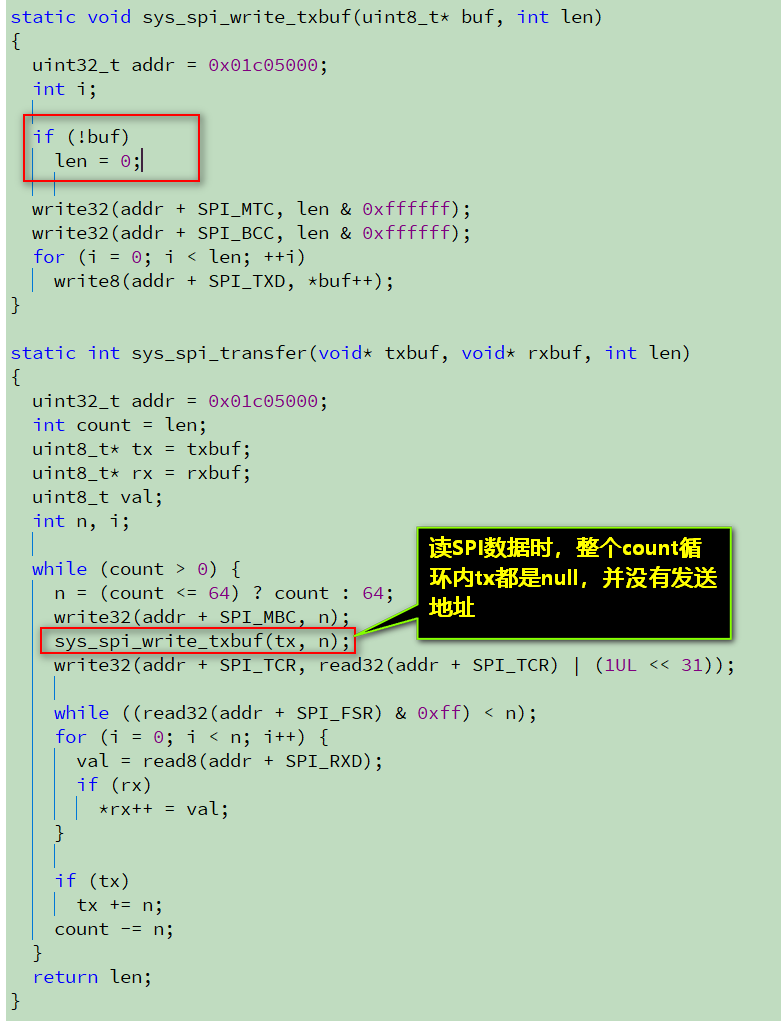
上层的flash读函数实际上这样解释:
static int sys_spi_write_then_read(void* txbuf, int txlen, void* rxbuf, int rxlen)
{
// 发送命令+地址
if (sys_spi_transfer(txbuf, NULL, txlen) != txlen)
return -1;
// 连续接收纯数据
if (sys_spi_transfer(NULL, rxbuf, rxlen) != rxlen)
return -1;
return 0;
}#185 Re: 全志 SOC » f1c100s spi不能使用burst模式??? » 2020-05-28 21:32:20
#186 Re: 技术人生/软件使用技巧/破解经验/技术吐槽/灌水 » 求版主开放下载权限 » 2020-05-27 14:34:17
#195 Re: 计算机图形/GUI/RTOS/FileSystem/OpenGL/DirectX/SDL2 » 谁有emwin的arm9 gcc linux版本的静态库? » 2020-05-13 18:23:05
#196 Re: 计算机图形/GUI/RTOS/FileSystem/OpenGL/DirectX/SDL2 » 谁有emwin的arm9 gcc linux版本的静态库? » 2020-05-13 18:06:34
用链接器的redirect功能,把库里的某几个函数旁路掉,自己写函数代替。
或者索性自己写个GUI_DEVICE_API,别用内置<GUIDRV_Lin.h>文件里的驱动就行。
自定义驱动形式如下,有模板的,不难实现,针对内存操作的更简单:
const GUI_DEVICE_API GUIDRV_Template_API = {
//
// Data
//
DEVICE_CLASS_DRIVER,
//
// Drawing functions
//
_DrawBitmap,
_DrawHLine,
_DrawVLine,
_FillRect,
_GetPixelIndex,
_SetPixelIndex,
_XorPixel,
//
// Set origin
//
_SetOrg,
//
// Request information
//
_GetDevFunc,
_GetDevProp,
_GetDevData,
_GetRect,
};#197 Re: 全志 SOC » 哇酷网友都乐于分享:为大家制作了F1C100s的RTX4+emWin5稳定项目! » 2020-04-28 18:03:16
针对tiny200v2的忘了去除lcd屏的pd0+pd12管脚,已修正:
【lichee-nano + tiny200v1】
Tiny200v1_LCD480x272_NS2009A.zip
【tiny200v2】
Tiny200v2_LCD480x272_NS2009A.zip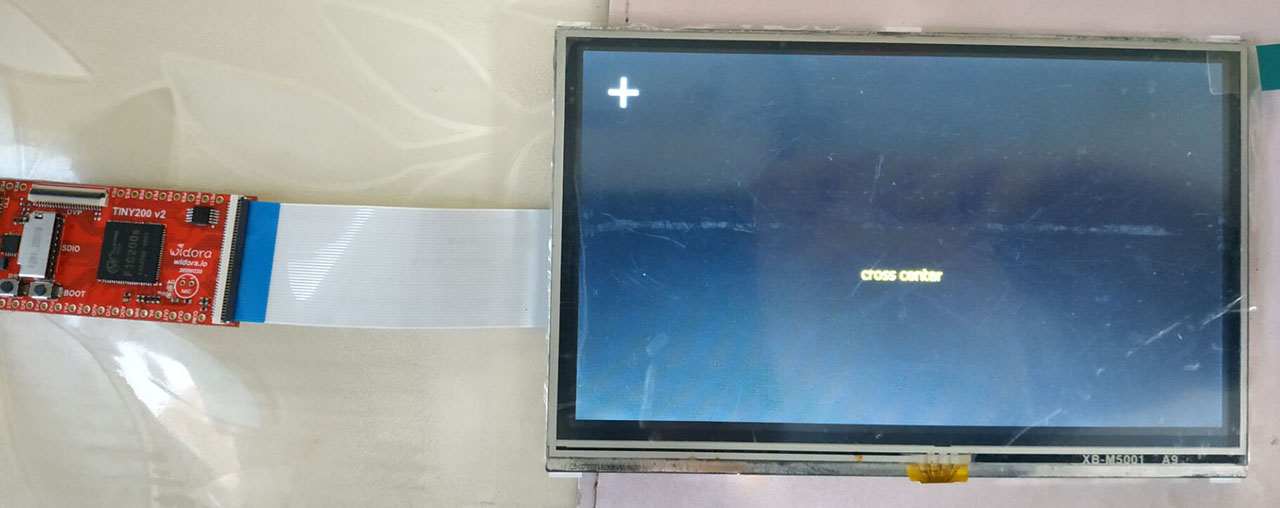
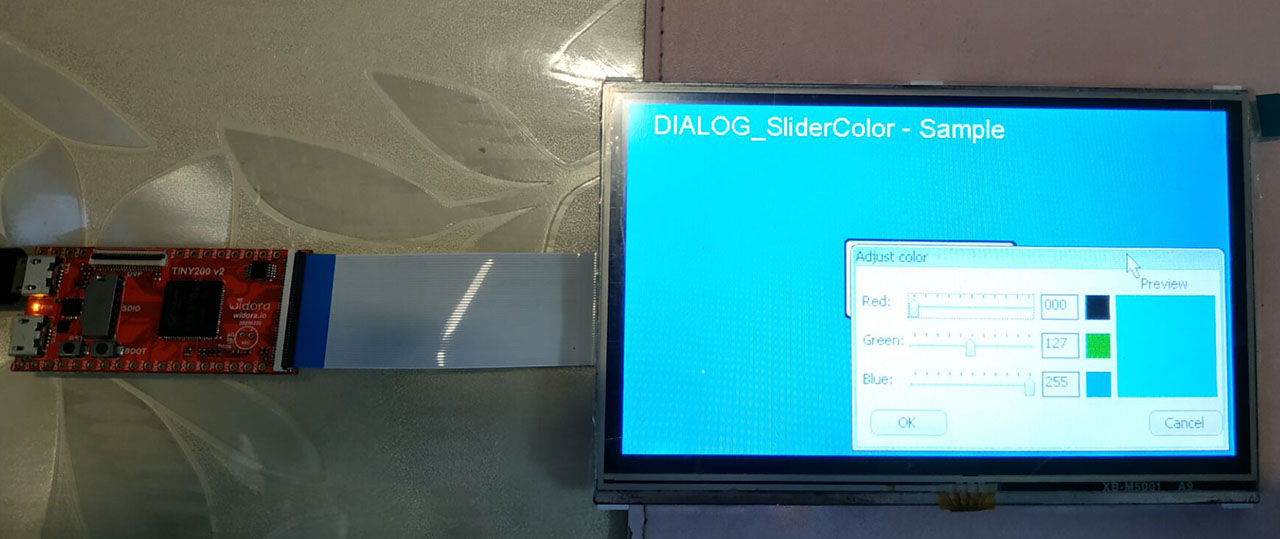
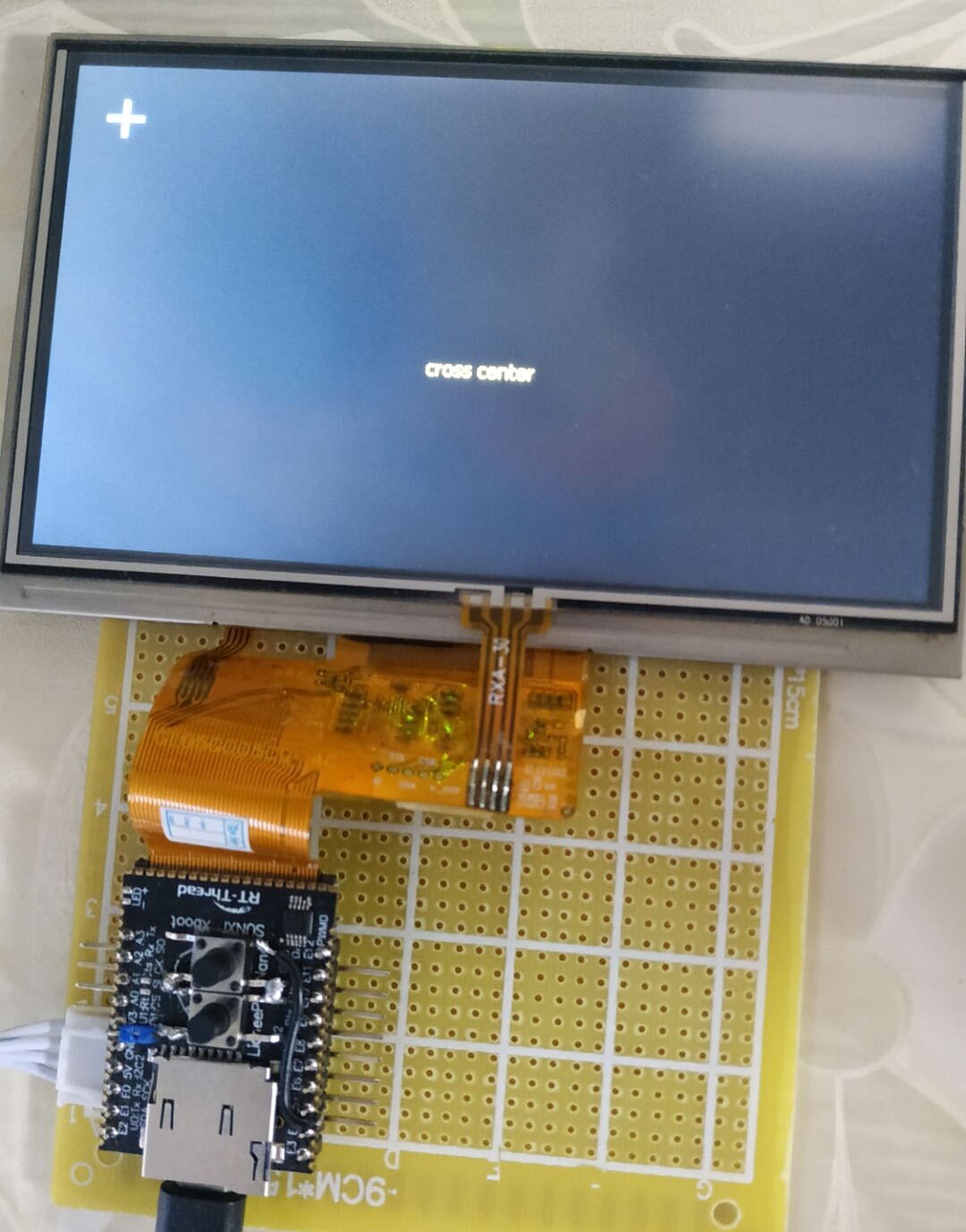
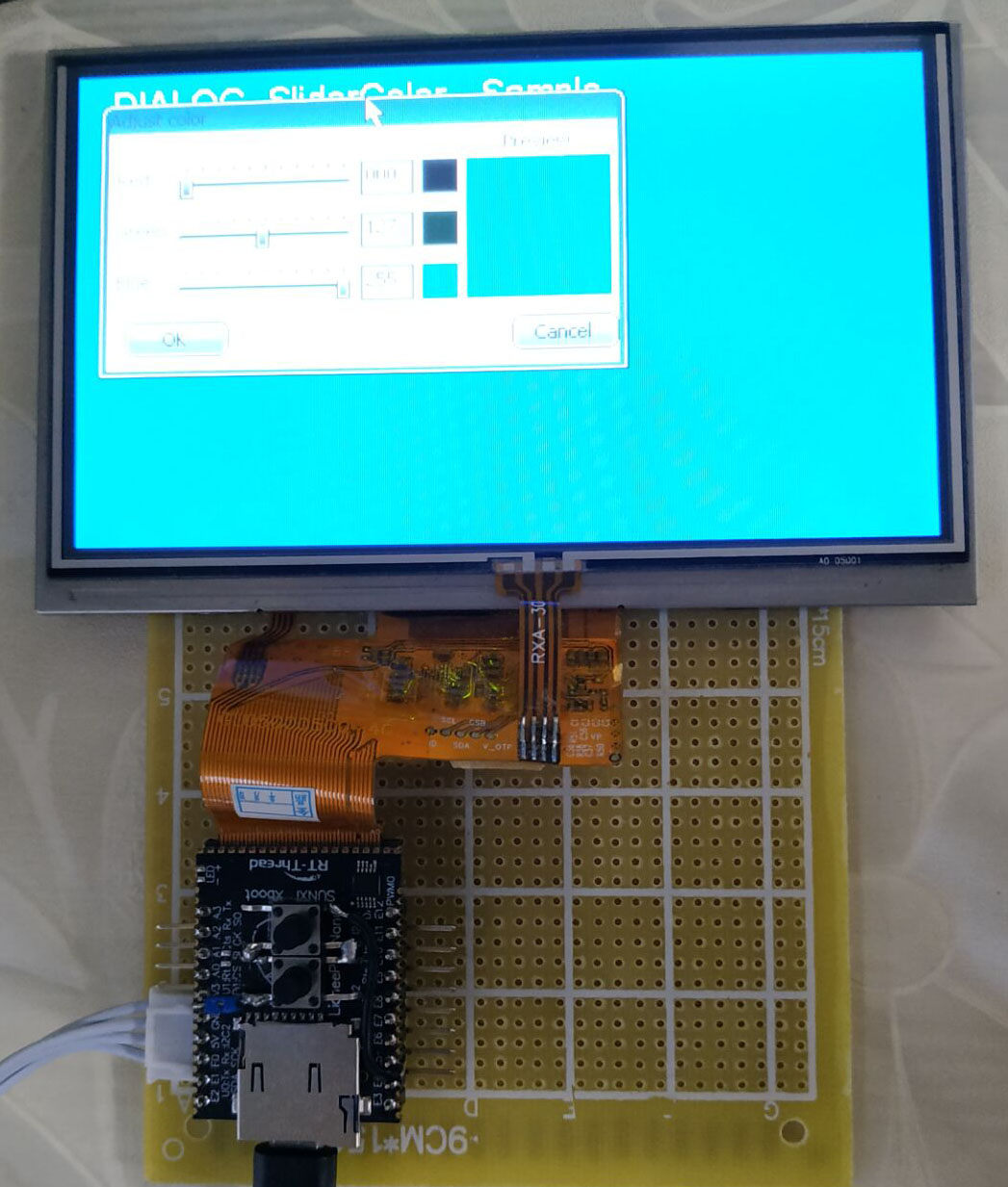

#202 Re: 全志 SOC » 哇酷网友都乐于分享:为大家制作了F1C100s的RTX4+emWin5稳定项目! » 2020-04-28 15:10:36
比如我想从SD NAND(贴片SD卡)里启动,要么在SD NAND 焊到板子上之前将程序烧进去,要么焊到板子上再烧程序上去,这时如果能将DRAM模拟成U盘,直接在电脑上将spl和app拖进去,然后将spl和app烧录进SD NAND,实现程序烧录
嗯,懂了。理论上你可以基于FELinside-f1c100s或者f1c100s-uboot制作出这么个东西来,尚且称它未fel-boot吧。
fel-boot由sunxi-fel送入ddr运行,负责把dram模拟成u盘,等着用户把uboot和linux内核放进“u盘”。但我没搞定usb呢,做不了啊。
我看这东西做起来即使不开源,对别人也是很有用的。
完成同样功能,还有个思路就是自己添加sunxi-fel功能,因为sunxi-fel可以通过usb接口传输一段ARM指令到设备,然后执行它;目前的任何sunxi-fel功能都是这么实现的。可以通过这种方式增加写tf卡和sd-nand的功能;不用模拟成u盘。扩展后的命令形如:
sunxi-fel -p sdnand-write 0 xxx.bin
#205 Re: 全志 SOC » 哇酷网友都乐于分享:为大家制作了F1C100s的RTX4+emWin5稳定项目! » 2020-04-28 14:02:47
感谢,刚才对比看了V1 V2原理图触摸驱动触摸的IO完全不一样。
谢谢,对比了一下pdf,还真是改过了!所以又适配了一下:
tiny200v1
Tiny200v1_LCD480x272_NS2009.zip
tiny200v2
Tiny200v2_LCD480x272_NS2009.zip
#207 Re: 全志 SOC » 哇酷网友都乐于分享:为大家制作了F1C100s的RTX4+emWin5稳定项目! » 2020-04-28 10:19:42
感谢,刚才对比看了V1 V2原理图触摸驱动触摸的IO完全不一样。
#209 Re: 全志 SOC » 搞定NS2009驱动 校准后没有大幅度的跳点 » 2020-04-26 19:27:19
那我这个固件测试看看,会不会跳点:
F1C100s_RTX_emWin_LCD480x272_NS2009.zip
用F1C100s硬件IIC的,充分利用中断的方式开发,不用浪费高速CPU死循环检测INT_FLAG标志!也不是用os_delay插在循环中。
#210 Re: 全志 SOC » 哇酷网友都乐于分享:为大家制作了F1C100s的RTX4+emWin5稳定项目! » 2020-04-26 18:53:19
好多人都说NS2009有跳点,其实不是芯片本身的问题。我做好了这个大家拿起测试看看,稳得很啊。
F1C100s_RTX_emWin_LCD480x272_NS2009.zip
不仅没有跳点,还每秒钟向GUI送100个触摸点,这个频率响应够快了吧!可以连接UART0看输出,点击屏幕就有输出。
#211 Re: 全志 SOC » 哇酷网友都乐于分享:为大家制作了F1C100s的RTX4+emWin5稳定项目! » 2020-04-26 15:37:53
电阻触摸屏测试程序:
RTX-emWin-480x272-ns2009.zip
#212 Re: 全志 SOC » 调通F1C100s的SPI DMA » 2020-04-26 11:37:08
#213 Re: 全志 SOC » 分享一份自己的F1c100s的Buildroot编译配置 » 2020-04-25 22:40:00
#214 Re: 全志 SOC » 关于F1C100s的DMA使用 » 2020-04-25 13:43:34
还有一个指定index的操作,不过这个操作无法针对虚拟地址,几乎无用。除此之外应该是没办法了。
Cortex-M7也有cache需要管理,它的库里也是只能遍历来操作指定内存区域:void MMU_InvalidateDCacheArray(unsigned long mva, unsigned long num) { signed long size = num; while (size > 0) { MMU_InvalidateDCacheMVA(mva); mva += CACHE_ALIGN; size -= CACHE_ALIGN; } }
另外一种惯用的方法就是,自己定义一个heap,这个heap用于管理non-cacheable的内存块;
就学学linux,用kmalloc申请的内存可以指定GFP_DMA类型,它就是从关闭cache的内存页分配。
#215 Re: 全志 SOC » 关于F1C100s的DMA使用 » 2020-04-25 13:40:02
看了这几个cache相关函数的实现,有个疑问。函数里需要遍历整块内存,以32字节为单位去调用 MCR p15……。这样岂不是很低效?
如果我有几百K的数据从外设读回来,实际上CPU cache只有一点点,并不需要遍历几百K去invalidate cache。
那怎样能够仅仅invalidate需要的cache呢?当然可以invalidate整个cache,还有没有更精简的方法呢?void MMU_InvalidateDCacheArray(unsigned long mva, unsigned long num) { signed long size = num; while (size > 0) { MMU_InvalidateDCacheMVA(mva); mva += CACHE_ALIGN; size -= CACHE_ALIGN; } }
还有一个指定index的操作,不过这个操作无法针对虚拟地址,几乎无用。除此之外应该是没办法了。
Cortex-M7也有cache需要管理,它的库里也是只能遍历来操作指定内存区域:
__STATIC_FORCEINLINE void SCB_CleanDCache_by_Addr (uint32_t *addr, int32_t dsize)
{
#if defined (__DCACHE_PRESENT) && (__DCACHE_PRESENT == 1U)
if ( dsize > 0 ) {
int32_t op_size = dsize + (((uint32_t)addr) & (__SCB_DCACHE_LINE_SIZE - 1U));
uint32_t op_addr = (uint32_t)addr /* & ~(__SCB_DCACHE_LINE_SIZE - 1U) */;
__DSB();
do {
SCB->DCCMVAC = op_addr; /* register accepts only 32byte aligned values, only bits 31..5 are valid */
op_addr += __SCB_DCACHE_LINE_SIZE;
op_size -= __SCB_DCACHE_LINE_SIZE;
} while ( op_size > 0 );
__DSB();
__ISB();
}
#endif
}#217 Re: Cortex M0/M3/M4/M7 » 点菜宝---到手测评 » 2020-04-24 19:45:41
#218 Re: 全志 SOC » 入坑F1C100基于网友armstrong的“为大家制作了F1C100s的RTX4+emWin5稳定项目!”工程添加串口鼠标控制 » 2020-04-24 17:39:02
#219 Re: 全志 SOC » 关于F1C100s的DMA使用 » 2020-04-24 17:24:46
#220 Re: 全志 SOC » 关于F1C100s的DMA使用 » 2020-04-24 17:23:52
#221 Re: 全志 SOC » 谁有V3S或者F1C100s的DMA例程? » 2020-04-24 17:11:05
#222 Re: Cortex M0/M3/M4/M7 » CM3内核学习疑惑 » 2020-04-24 16:22:14
#223 Re: Cortex M0/M3/M4/M7 » CM3内核学习疑惑 » 2020-04-24 16:21:05
#224 Re: 全志 SOC » 关于F1C100s的DMA使用 » 2020-04-24 16:12:39
#225 Re: 全志 SOC » 关于F1C100s的DMA使用 » 2020-04-24 16:10:12
#226 Re: 全志 SOC » 入坑F1C100基于网友armstrong的“为大家制作了F1C100s的RTX4+emWin5稳定项目!”工程添加串口鼠标控制 » 2020-04-24 15:33:43
#227 Re: 全志 SOC » 入坑F1C100基于网友armstrong的“为大家制作了F1C100s的RTX4+emWin5稳定项目!”工程添加串口鼠标控制 » 2020-04-24 15:30:26
#238 全志 SOC » 哇酷网友都乐于分享:为大家制作了F1C100s的RTX4+emWin5稳定项目! » 2020-04-22 22:03:47
- armstrong
- 回复: 167
在哇酷网在线时间并不算长,但却很快就能找到合适的学习资料。这是因为有大量热爱分享的网友给哇酷添砖加瓦,也是由于哇酷提供了交流的平台,节省大家的时间。
对于全志F1C100s/F1C200s芯片,官方主导的玩法是linux,社区也是顺着这种玩法,不断扩充。但是广大单片机开发者通常缺乏Linux开发经验,而且对具备MMU+Cache的ARM9也不够熟悉,因而无法快速上手这几款性价比无敌的SoC,只能望洋兴叹。况且,在与好多网友交谈后得知,好多项目并不适合使用linux——linux不是万金油,RTOS才是真爱。于是,我结合自己一直以来对ARM9的熟悉,制作了这个移植,基于单片机开发者熟悉的keil-mdk环境,为广大单片机开发者降低门槛,让你打开熟悉的Keil就有可用的RTOS【RTX4】和GUI【emWin5】!其它组件在keil下也并非难事。(我的环境是MDK5.29,尽量使用相同版本,如果比我低可能会丢失项目某些选项!)
项目的好多驱动是基于xboot和网友的精简代码,引用的文件首部保留原作者信息文本。我做的工作是整合代码,以及RTX4+emWin5的移植部分,RTOS的基础是中断控制和Timer,这部分重新实现了。具体的内容你拿到源码查看就能发现,不再多说。
因为我对RTX4比较了解,移植的质量可以保证稳定【除非不是我的代码部分】;emWin很好用,我觉得很多人都用过。大家尽情使用吧,把F1Cx00s玩溜起来!启动1.7MB程序时间大约500毫秒,视程序大小而定。
项目直接支持的开发板有:
widora的tiny200 v1
widora的tiny200 v2
sipeed的lichee-pi nano
推荐使用widora的tiny200开发板,板子为单片机开发者设计了boot和reset按钮,因而进入FEL模式非常方便!板子还自带USB转串口芯片,可作为终端串口,方便调试信息输出。据说V2板还加了音频功放电路,直驱小喇叭。
优酷演示视频:https://v.youku.com/v_show/id_XNDYxNjc2MTk4MA==.html
国内码云地址【推荐,只是因为快】:https://gitee.com/xuyao2020/F1C100s_with_Keil_RTX4_emWin5
国外github【好慢,图片几乎全挂,因为gfw的存在,国内开发者总在夹缝中求生存】:
https://github.com/hongxuyao/F1C100s_with_Keil_RTX4_emWin5
源码打包下载:
AllwinnerSoC_part1.rar
AllwinnerSoC_part2.rar
AllwinnerSoC_part3.rar
直接写入开发板的bin文件:
RTX4_emWin5_F1C100s_tiny200v1.zip
RTX4_emWin5_F1C100s_tiny200v2.zip
图赏

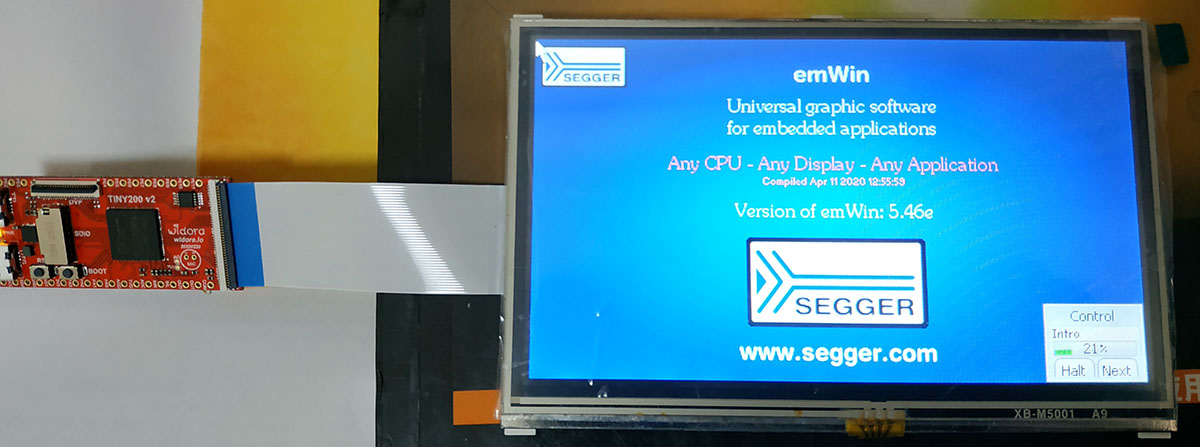
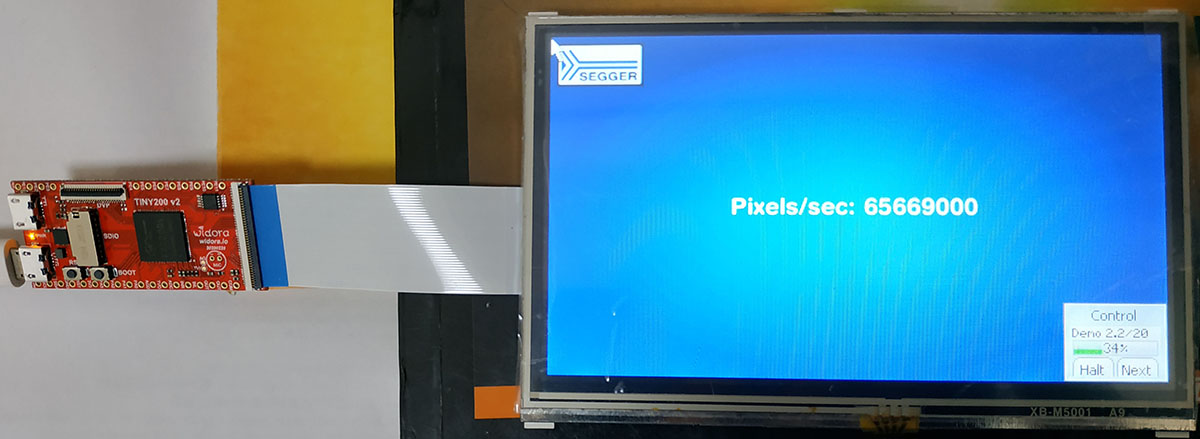
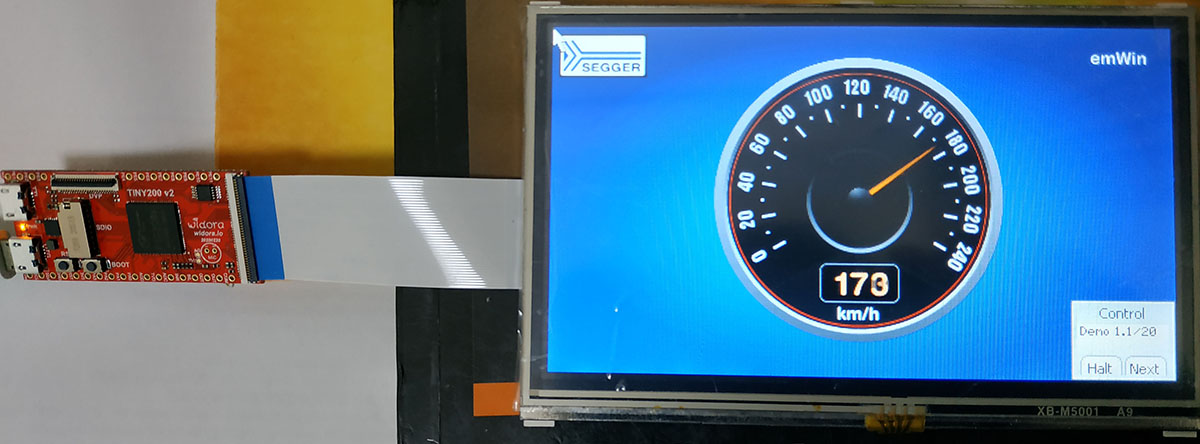
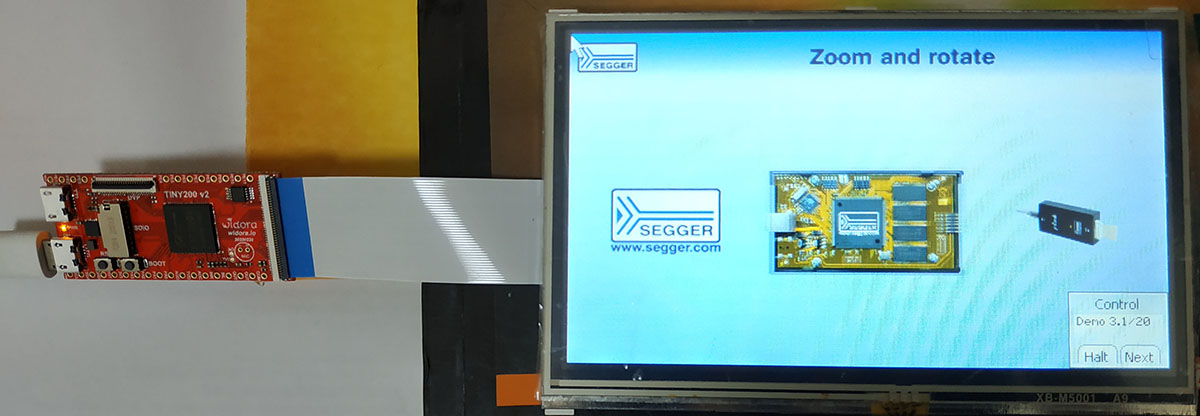




如何适配tiny200v2【因为终端串口有变】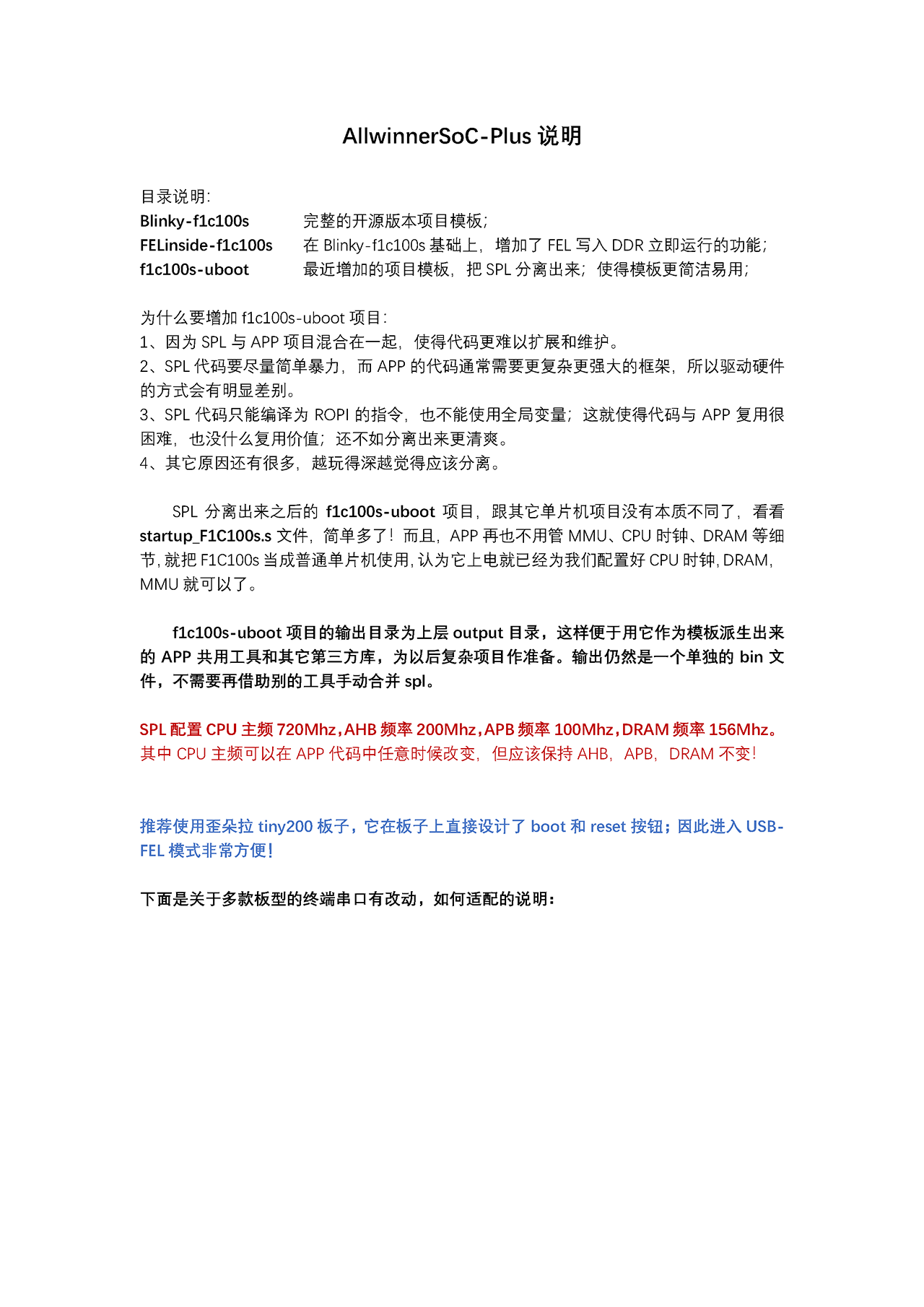
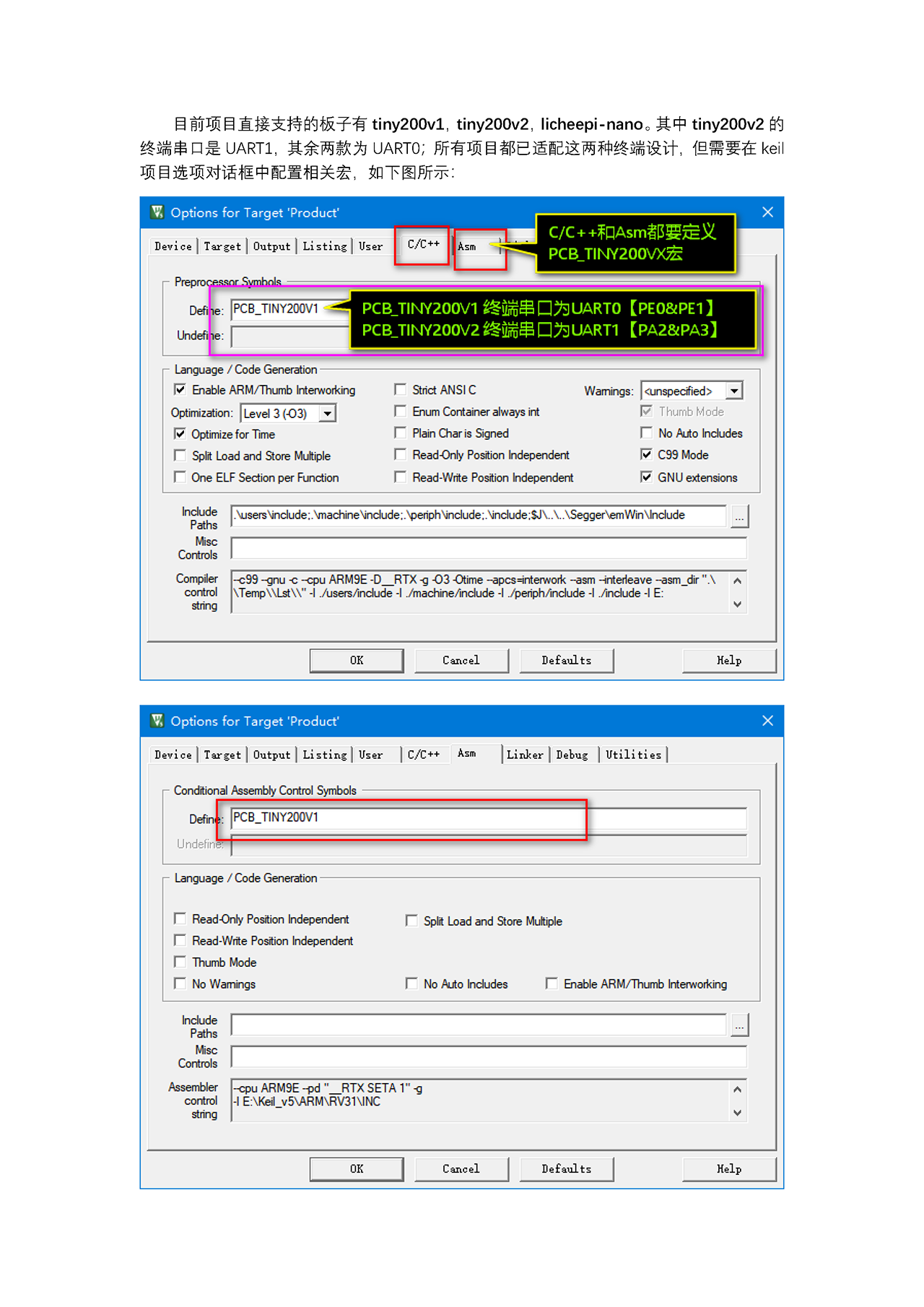
#241 Re: 全志 SOC » 试试用F1C100s来3D绘图 » 2020-04-15 12:21:56
我只是搬运了一下代码。。我参考的是这篇帖子,基于Frambuffer后端实现
https://blog.kaaass.net/archives/1340
你这个演示bin,cpu主频和ddr频率是多少啊?写入flash运行,经常性宕机。
#242 Re: 全志 SOC » 试试用F1C100s来3D绘图 » 2020-04-14 22:10:34
#243 Re: 全志 SOC » f1c100s怎样才能timer产生并进入中断? » 2020-04-01 19:10:48
#244 Re: 计算机图形/GUI/RTOS/FileSystem/OpenGL/DirectX/SDL2 » 谁有emwin的arm9 gcc linux版本的静态库? » 2019-12-04 10:57:50
#245 Re: 计算机图形/GUI/RTOS/FileSystem/OpenGL/DirectX/SDL2 » 谁有emwin的arm9 gcc linux版本的静态库? » 2019-12-04 10:53:48
@armstrong
大神我在f1c100上面试了: 提示打不开/dev/ge2d,没有硬件加速。。。另外我编译的时候用的是arm-none-linux-gnueabi-gcc不知道影响不?
# ./NuvotonGUIDemo
uVideoSize = 0x177000
var.xres = 0x320
var.yres = 0x1e0
pVideoBuffer = 0xb6d8f000
Main Task thread
WM_SetCreateFlags(WM_CF_MEMDEV)
GUI_Init()
GUI_X_Config()
GUI_ALLOC_GetNumUsedBlocks()=0x0
LCD_X_Config()
### g_xres=800 g_yres=480 g_bits_per_pixel=32
LCD_GetSwapXY()
LCD_SetVRAMAddrEx(0, (void *)pVideoBuffer)
No LCD calibration
Cannot open ge2d!
^C
#
#
sorry,你不能使用nuvoton里的LCDConf.c,要自己适配一个。
用这个模板即可,稍微改一下就行的。
比如你制作了自己的GUIDRV_Template16_API或者GUIDRV_Template32_API,然后把这个替换LCDConf.c里的这里
if (g_bits_per_pixel == 32)
GUI_DEVICE_CreateAndLink(&GUIDRV_Template32_API, GUICC_M888, 0, 0);
else
GUI_DEVICE_CreateAndLink(&GUIDRV_Template16_API, GUICC_M565, 0, 0);
模板:
https://whycan.cn/files/members/1592/GUIDRV_Template_c.txt
为什么要自己适配呢?因为nuvoton改写了emWin源码,把库里的GUIDRV_LIN_32/GUIDRV_LIN_16改成依赖ge2d的了。
自己适配一个就不用它们,自己来实现一个在内存块里绘制点、线、面的驱动程序。当然这并不复杂,因为emWin有模板。
#246 Re: 计算机图形/GUI/RTOS/FileSystem/OpenGL/DirectX/SDL2 » 谁有emwin的arm9 gcc linux版本的静态库? » 2019-12-02 22:45:05
#247 Re: 计算机图形/GUI/RTOS/FileSystem/OpenGL/DirectX/SDL2 » 谁有emwin的arm9 gcc linux版本的静态库? » 2019-12-02 15:51:23
还记得某位大神分享的emWin演示吗?它用的就是nuvoton发布的emWin库,运行几天几夜不死机。
https://whycan.cn/t_2689.html
#248 Re: 计算机图形/GUI/RTOS/FileSystem/OpenGL/DirectX/SDL2 » 谁有emwin的arm9 gcc linux版本的静态库? » 2019-12-02 15:48:00
#249 Re: 计算机图形/GUI/RTOS/FileSystem/OpenGL/DirectX/SDL2 » 谁有emwin的arm9 gcc linux版本的静态库? » 2019-12-02 15:46:41
上面的大神不是说没有限制么,另外好像新塘芯片没有id,
现在只待大神解惑,
或者晚上闲了回去再试试大神说的这个版本,
你用这个:
https://github.com/OpenNuvoton/NUC970_Linux_Applications/tree/master/emWin
注意自己适配一下LCDConf.c文件,里面的代码有点烂。
#250 Re: 计算机图形/GUI/RTOS/FileSystem/OpenGL/DirectX/SDL2 » 有什么比较好的嵌入式操作系统,实现了标准文件系统和网络 » 2019-12-01 14:45:29
#251 Re: 计算机图形/GUI/RTOS/FileSystem/OpenGL/DirectX/SDL2 » 谁有emwin的arm9 gcc linux版本的静态库? » 2019-12-01 14:30:22
#252 Re: 计算机图形/GUI/RTOS/FileSystem/OpenGL/DirectX/SDL2 » 谁有emwin的arm9 gcc linux版本的静态库? » 2019-12-01 14:28:44
#254 Re: Cortex M0/M3/M4/M7 » 哪位神哥在用 mdk 自带的 RTX 系统? » 2019-12-01 13:51:33
#259 Re: Nuvoton N32905/N32926/NUC972/N9H20/N9H26/N9H30 » NUC972DF62Y 淘宝零售价从36掉到28元, 与V3s处于同一水平了 » 2019-04-11 21:28:00
#260 Re: 全志 SOC » 歪朵拉上线了全志S3/S3L的芯片零售服务 » 2019-04-10 23:33:02
山无棱 说:包邮不是随便说说的,哈哈
好了,明确下:大陆内的挖坑网网友包邮
冲你这句话,我决定注册个账号加入挖坑网!就等歪朵拉出S3/S3L的板子了。
页次: 1
- 首页
- » 搜索
- » armstrong 发表的帖子
